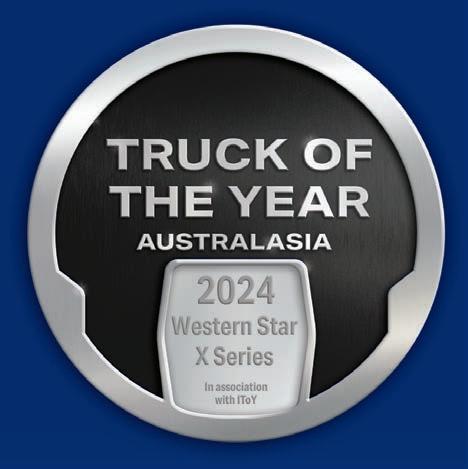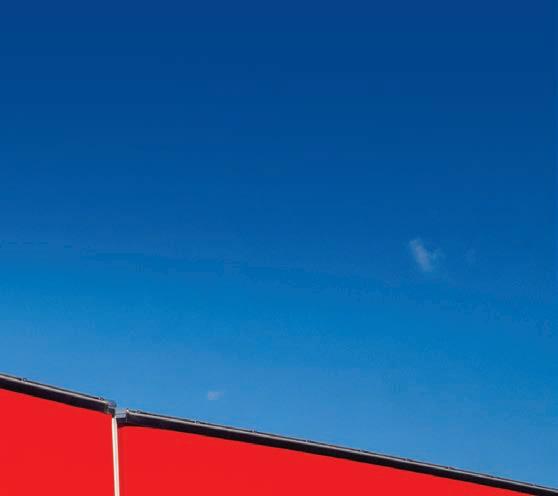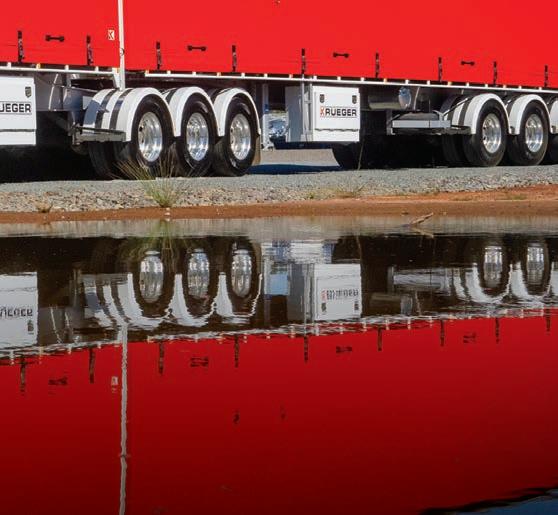


























































































































































• 60% less ash than conventional API CK-4
• Extends DPF maintenance period
• Maximises fuel economy
• Prolongs oil change interval









12 PBS STANDARDS UNDER PRESSURE
Glacial approach to change is building industry frustration
14 AUTOMATED TRUCKING
What’s the current state of play on automated trucks in Australia?
22 A LIFETIME OF DIESEL
Detroit’s latest engine range brings greater efficiency and more power
28 AWESOME ALEXANDRA
The crowds were out in force on the King’s Birthday weekend

Dockets issued & submitted. No more chasing up dockets! Automatically uses Rates to calculate Totals. Integrates with leading accounting systems.
32 SWEET SWEDE ON A ROLL
44 SMALL SCREEN STARS


XXL option brings comfort away from home
The team at TCB Transport are back for more
46 GET READY FOR CASINO
Registrations are open for this year’s show
58 TRUCKIN IN THE USA
Big, bold, and quick off the mark
62 POWER OF THE POSTMAN
Delivering the mail never looked so good







Innovation that puts people first

The UD Quon may be our greatest modern achievement.
From its 2004 introduction with the world’s first ‘Selective Catalytic Reduction System’. To its reinvigoration in 2017, with Euro 6 compliant technology. To today, with the reimagined Enhanced Quon, that continues to break boundaries with greater safety, productivity, comfort and sustainability. We continue to go the Extra Mile to ensure our flagship Quon is better for business, better for people, and better for the planet.
There’s a reason the UD Quon is the truck Australia trusts
Going the Extra Mile
To find out more, contact your UD Trucks dealer on 1300 BUY A UD or visit udtrucks.com/australia


EDITORIAL
Editor Geoff Crockett
E-mail Geoff.Crockett@primecreative.com.au
Journalist Alex Catalano
E-mail Alex.Catalano@primecreative.com.au
Contributors Warren Aitken, Frank Black, Warren Clark, Tiarna Condren, Rod Hannifey, Michael Kaine, Chris Roe, Ken Wilkie
Cartoonist John Allison
PRODUCTION
Art Director Bea Barthelson
Print IVE Print
ADVERTISING
Business Development Manager
Hollie Tinker Ph 0466 466 945
E-mail Hollie.Tinker@primecreative.com.au
SUBSCRIPTIONS
www.ownerdriver.com.au/subscribe
Phone +61 (0)3 9690 8766
Mon-Fri 8am-4.30pm (EST)
Email subscriptions@primecreative.com.au
Mail 379 Docklands Drive, Docklands, VIC 3008 Australia
EXECUTIVE GROUP
CEO John Murphy
COO Christine Clancy
Operations Manager Regina Fellner
Trader Group Sales Director
Asanka Gurusinha
Owner Driver is published by
379 Docklands Drive, Docklands Melbourne VIC 3008
Telephone: (+61) 03 9690 8766
www.primecreative.com.au
ISSN 1321-6279
OwnerDriver magazine is owned by Prime Creative Media. All material in OwnerDriver is copyright and no part may be reproduced or copied in any form or by any means (graphic, electronic or mechanical including information and retrieval systems) without written permission of the publisher. The Editor welcomes contributions but reserves the right to accept or reject any material. While every effort has been made to ensure the accuracy of information Prime Creative Media will not accept responsibility for errors or omissions or for any consequences arising from reliance on information published. Opinions expressed in OwnerDriver are not necessarily the opinions of, or endorsed by the publisher unless otherwise stated.
Sitting in front of the keyboard, staring at a blank page and thinking of just how many times my predecessor Greg Bush faced the same dilemma over the past 16 years is a somewhat humbling experience.
While I’m proud to report to OwnerDriver readers that Bushy kickstarted his retirement with a wellearned break, I’ll admit I’m kicking myself for not working up a list of editor’s note ideas with the great man before he hit the road to enjoy some me time.
Luckily, having the chance to meet many OwnerDriver readers in person at the recent Alexandra Truck, Ute and Rod Show in country Victoria has offered plenty of inspiration.




The passion of the owners, the drivers and the families involved in the transport industry was well and truly on show on that chilly Sunday in June and served as a solid reminder of just why this magazine is so important for the readers it serves.
Past winners of the Truck of the Month spoke fondly of the coverage they had when the spotlight fell their way, and the calls of support they’d had from their colleagues.
Truck owners talked of the challenges of running a transport business in 2024, the state of the roads, the administrative load, the rising costs of fuel and the fear of falling foul of the authorities despite doing everything in their power to be compliant.
There was also plenty of talk of the good ol’ days, when things were simpler and magazines were thicker – times before the internet and social media, and the disruption that came with it.
Yet, despite the long list of challenges, there was an underlying sense of optimism.
More than 18,000 people braved the threat of rain to attend this year’s event, and for many of the owner drivers I spoke to on the day there was still an upside to talk about.
There were new trucks arriving, restorations underway,
and new yards and offices being purchased to cater for growing demand.
There was also the camaraderie of turning out at 4.30am to roll into town, park the pride and joy, give it a last clean, and spend the balance of the day catching up with mates from all around the country who share the transport bug.
As Chris Roe notes in his column this month “patience, resilience, determination and strong decision-making skills” are key traits of those who find success in the transport game.
Those are the same traits we’ll expect to see from our Olympians in Paris later this month as they get to test their athletic abilities against the best in the world – taking a lifetime of learning and applying it to their own particular game.
For those working in transport, the marathon journey is real. Every day has its challenges, wins, and losses. I see it as our mission at OwnerDriver to do our best to provide you with the information, support, and encouragement you need to go for Gold, whatever that might look like in your world.
I look forward to being your Editor and sharing your stories in print every month.
I hope you enjoy the read.













The NSW Heavy Vehicle Access Policy is set for major change, and industry feedback will play a big part in it.
Transport for NSW says the feedback it receives on the draft NSW Heavy Vehicle Access Policy is necessary to be able to respond to the current needs of the transport industry in the state.
The need for access to both the state’s freight network, and Australia’s freight network as a whole, has only continued to grow since the initial policy, released in 2018.
That saw increased access for trucks as big as AB triples on the Newell Highway, the major freight route which covers a network between the New South Wales, Victorian and Queensland borders.
Transport for NSW executive director of freight Scott Greenow spoke to OwnerDriver about what the government body expects to hear from the industry.
“I think we’ll get a fair bit of feedback from industry and asset owners: local councils and other industry stakeholders. We’re pretty keen to hear what everyone has to say,” Greenow says.
“From an industry kind of lens, one of the benefits of the draft Heavy Vehicle Access Policy was that it was formed through some fairly detailed consultation, admittedly a little while ago, in late 2022.
“It was detailed engagement with industry through workshops. That basis was really powerful for us to understand what it looks like from an industry point of view.
“In 2018 we released the last policy framework, and by 2022 we had pretty much delivered on all the elements in there. It really highlighted to us the vision needed far further into the future.
“We needed to look at how close we

could get to ideal for what we could see and what industry considers ideal.”
Since the initial access policy, there have been significant advancements in a number of areas of the transport industry, including PBS standards, developments in data sharing and telematics and significant roads projects.
With more and more roads across NSW and the country getting sealed and upgraded, trucks have greater access to the road network than ever.
Greenow says it is TFNSW’s job to ensure drivers in the state are traversing the network as safely as possible.
“There’s a requirement and expectation from everybody that we continually improve the safety of the freight task,” he say.
“There’s commitments broadly about reducing the environmental impact. From a productivity point of view everybody knows the cost of living pressure is an economic driver.

“We want to make sure industry in NSW and more broadly are as competitive as possible. All of those things came together to say how do we do this, what does good look like and how do we make sure we consider a systems approach?”
Also to be considered in the access policy feedback is how road connects to rail, and what both networks can cover.
Greenow says drivers and operators shouldn’t be too concerned about rail taking too much freight off the road and hurting the trucking industry, as the rail network still can’t cover what roads can.
“Often people talk about road and rail, and whether either is good or bad. Both of them need each other,” he says.
“We do not have the ability to do the entire freight task on road. We struggle to do it today, let alone if there was no rail. Equally if we only had rail, we wouldn’t be able to deliver the freight task. Rail lines simply don’t service enough locations.
“It was really understanding how these modes work best together, and how to make sure we utilise the network to its maximum capability.
“We can’t exceed that capability, but we need to deliver a safer and sustainable, most productive outcomes for both road and rail.
“How does the Heavy Vehicle Access Policy try and achieve that?
“We went through all of that with the road freight industry at the time.
“Quite impressively, they were very cognisant of the need for rail to work
alongside road.” After a decision made last September saw the increase of truck widths from 2.5 to 2.55m, there has now been a renewed push to increase truck height and mass limits.
Along with the gradual increase of electric and other fuel cell trucks on the road, heavy vehicles with greater mass are going to need to be approved to travel on Australian roads.
This is another area that Greenow expects the access policy will need to consider.
“If there’s any growth in length, width, height or mass, industry can speak at length to the challenges that vehicles have for access today. I certainly think that will be raised,” he says.
“If it’s a problem today, and we’re trying to improve tomorrow, then that will be an even bigger challenge for them.
“The innovative vehicles principle will finally give industry, asset owners, road managers and the community the opportunity to partner with each other.
“For the first time industry would be able to elect a better designed vehicle that is able to transport more freight with less fuel, less drivers, less equipment. Using better vehicles that don’t require the community to endure a poorer performing vehicle means everybody wins.”
TFNSW expects it will take at least a few months to publish the results of the feedback that will be received from the survey.







































































With our care program, we always go the extra mile to help look after our customers and protect their investment by providing the best service, using the best parts. And for a short time, if you buy a selected N Series cab chassis or Ready-to-Work truck† you can add a 6-Year Essentials Service Agreement Package for the price of three years, e ectively halving your servicing costs. This covers all scheduled service work using Isuzu Genuine Parts and includes engine, transmission, brake, suspension, and electrical components. Find out more at isuzu.com.au or see your nearest Isuzu Truck Dealer.





















































































































































































































































Longer, heavier, trucks were given the nod by transport ministers when they gathered in June, subject to safety conditions being met

Australia’s transport ministers have formally agreed to the National Transport Commission’s (NTC) recommendations to increase truck length and mass after their meeting on Friday, June 7.
The meeting communiqué details the transport ministers’ response at length, observing the changes recommended to the Heavy Vehicle National Law (HVNL).
“Ministers agreed to recommendations providing access for heavy vehicles that are slightly longer and heavier, subject to adequate safety assurances,” the communiqué says.
“Ministers also requested the NTC undertake a review of the adequacy of licensing and accreditation arrangements for heavy vehicle drivers, and report back to the next meeting of ITMM.”
The NTC’s second consultation on changes to the HVNL included options to:
Left: Changes to the HVNL come on the back of the most recent changes to its enforcement with Queensland now regulated by the NHVR
• increase general mass limits by up to five per cent, effectively replacing concessional mass limits
• increase the length of 19 metre vehicles to 20 metres.
Ministers also touched on the progress of the Infrastructure Decarbonisation Working Group and Decarbonisation of Transport Working Group, agreeing to adding active transport to their work plan. They also provided in-principle support for the use of a nationally consistent set of carbon values in the assessment of business cases for transport infrastructure projects over $100 million, with an aspirational commencement date of January 1, 2025.
Ministers expressed concern at the increasing road toll and how to create change across a number of key issues. They referenced the outcomes of the National Road Safety Conference 2024 and agreed they should be made a priority.




The National Heavy Vehicle Regulator (NHVR) will be undertaking random mechanical inspections of thousands of trucks, buses, and other special purpose vehicles, starting this month.
The inspections will be undertaken as part of the regulator’s 2024 National Roadworthiness Survey (NRS). Roadside and fixed inspection sites and depots will begin popping up across the country from July, and continue to be rolled out, nationwide, for around 12 weeks.
The NHVR says the inspections take an average of 45 minutes to complete, and will include a detailed visual inspection and mechanical component testing via vehicle inspection equipment that is based
on the National Heavy Vehicle Inspection Manual.
“The survey will provide a point-in-time snapshot of the mechanical condition of Australia’s heavy vehicle fleet so that we can identify current issues and help us create a nationally consistent inspection policy,” the NHVR says.
“The vehicles will be selected for inspection on a random basis using a method recommended by a statistician and inspections will be performed in a consistent manner nationally.
“Specific operators, industries or drivers are not being targeted.”
While the NHVR is only active in NSW, ACT, QLD, SA, TAS and VIC,



all Australian state and territories are involved in NRS 2024, including Western Australia and Northern Territory.
For truckies, time taken during the inspection must be considered as work time for the purpose of your work diary and for fatigue management considerations. Normal fatigue management rules apply.
“We have tried to minimise disruption to industry in the way we designed the survey, but drivers must still comply with fatigue laws and all




other HVNL requirements,” the NHVR says.
A report outlining the key findings of the survey will be published in early 2025.
“We want the data to be as representative as possible of the condition of the Australian heavy vehicle fleet,” the NHVR says.
“The data collected will be used to inform policy and develop projects to reduce the social, environmental and economic harm from unroadworthy heavy vehicles.”











Changing needs for Australia’s Performance Based Standards are seeing the old scheme become outdated, experts say
Amidst a number of changes currently being called for across the heavy vehicle industry, one of the most pressing is the reform of the Performance Based Standards (PBS) Scheme.
Now entering its 17th year of operation, PBS outlines minimum requirements for heavy vehicles and heavy vehicle combinations, but experts believe it is out of date and unnecessarily restricting Australian trucks.
OwnerDriver spoke to Scott Britton, who is the PBS Review Project Officer at the National Heavy Vehicle Regulator, after the NHVR released a statement outlining its position on the current PBS.
It describes how “the safest, most productive, and lower emission heavy vehicles face more barriers to get on the road than a standard ‘prescriptive’ heavy vehicle”, failing its original intentions.
That statement followed the release of the NHVR’s PBS 20 discussion paper in 2022, which put forward proposals for the reform of the scheme.
Britton says there were significant outcomes the regulator was able to take away from the industry response to that paper.
“The outcome of that process is that there was a lack of consensus among stakeholders,” he says.
“There were a number of proposals put forward, we really didn’t get any consensus around which ones might be the best path forwards.
“At the same time, transport ministers had engaged Ken Kanofski to undertake his broader review of the Heavy Vehicle National Law (HVNL) which also included an assessment of the PBS scheme.


“What we’re not seeing is a timetable that’s been laid out.”
“He made a series of recommendations to ministers which were accepted which related to Britton describes as “regulatory red tape” getting in the way of manufacturers being able to innovate with their vehicles.
elements which could be reformed for the better.
“What we’ve seen is that with the lack of consensus among stakeholders we can get a broader acceptance that reform is required. We’ve looked to back that in with our new paper.”
Britton and the NHVR are well aware of continued frustrations from industry of the sluggish nature to changes to PBS and the broader HVNL.
Part of their push for these new changes come from a desire to see HVNL review progressing, with another step forward coming from transport ministers agreeing to the National Transport Commission’s recommendations in June.
“What we’re not seeing is a timetable that’s been laid out,” Britton says.
“The broader HVNL review has been going on for six years, and we’ve got a number of processes here that are taking time. We have to remember that the PBS scheme was originally conceived for the purpose of innovation.
“Ultimately we’re seeing that innovation come to a grinding halt and PBS becoming an alternative regulatory mechanism.”
Some of this hold up for PBS reform has come from what
Updating the horizontal loading standard has already taken more than four years, he says, and that is holding up other reform.
“Four years is a long time to work towards one standard when innovation in other areas of heavy vehicle design is moving at a far greater pace,” Britton says.
“It then becomes a problem if an operator wants to put the possible option on the road in the terms of a combination that meets their freight task, which is what PBS is about, there are limitations in the way of how innovative they can be.
“The changes we’d like to see within the law are access elements to PBS vehicles. We’d like those common, mature designs like the 20m truck and dog or 30m A-doubles, which we’re seeing come through PBS in ever-increasing numbers recognised as a prescriptive combination is. They shouldn’t be subjected to the PBS process.
“They’ve gotten to the point where they’ve proven themselves so a design or vehicle approval is probably not necessary.
“In the first few years the number of annual approvals was around 75. They were in tiny annual increments. Now, we’re seeing just shy of 4,000 new combinations being approved in a calendar year.”




While automated trucks may have once seemed far away, significant technological developments mean they’re closer than ever
If you were lucky, you may have gotten a glimpse at Australia’s first on-road trial of automated trucks in 2022, completed by Transurban along Melbourne’s Citylink.
Autonomous trucks may seem like a faraway future, something straight out of a science fiction blockbuster, but the technology is growing faster than many in the industry may realise.
There’s a slow adoption of automated trucks across the industry in certain sectors.
Scania has been utilising a tip truck at mining sites in the Pilbara, with less complexity needed in a closed site than on the open road.
Executive director of the Centre for Connected and Automated Transport (CCAT) Rahila David says that there are trends starting to emerge across the transport sector in Australia as operators and manufacturers consider the benefits of automated trucks.
She has extensive experience in the emerging area, having previously led the development of the safety assurance framework for the commercial deployment of automated vehicles in Australia while at the National Transport Commission.
“There are five levels of automation, moving from a vehicle where you have to do everything at zero to a vehicle that can move by itself under any condition at five,” David explains.
“Level four automated trucks and those without drivers are where we’re seeing development and commercial imperatives. We’re currently dealing with limited complexity.
“That’s what allowing the technology to be developed quicker. It’s that hub-to-hub route where it’s being developed.
“Some OEMs are developing automated driving systems themselves, but some that are partnering with software companies. Others are leaving the market, and some are entering it.
“We spoke to one manufacturer in the US that said they were looking to deploy hub-to-hub automated trucks on the open road by the end of the decade. What’s clear is that the technology is coming and it might not be as far away as we think.”
One of the concerns that

“There are five levels of automation, moving from a vehicle where you have to do everything at zero to a vehicle that can move by itself under any condition at five.”
has been raised around the development of automated trucks is what it means for the truck driving profession.
While Australia continues to face a skilled driver shortage,
David believes that driverless vehicles could help to close the gap in the employee pool, but won’t completely put truck drivers out of a job.
If anything, she says it could add to the responsibilities of drivers, or change what kind of jobs could become available with the advent of commonly used automated trucks.
“There are a number of workforce issues that could arise as a result of automated trucks entering the market, but for
commercial imperatives, we can address the driver shortage,” David says.
“There’s also the potential to open up the flexibility of operations. You can have more operation time with automated trucks driving for 24 hours. Not having a driver in the vehicle can also reduce operating costs.
“Driving jobs could change in the future, and we saw that this week with the Transport Workers Union’s response to the Transurban trial. It’s a slow deployment of this technology, and there’s still a significant lack of skilled drivers.
“What we’ll be hearing from the manufacturers is that driving jobs won’t be lost because of that
gap that already exists. Driving jobs could become more attractive.
“When you take automation to cover long distances, the driver’s job might be to do the first or last mile closer to communities.”
David also believes that the way that manufacturers approach how they integrate automated trucks into their fleets will have a significant effect on their development in Australia.
“New business models are emerging around automated trucks,” she says.
“Manufacturers are having ongoing relationships with their fleet operators. They don’t just provide a vehicle, they’re providing more of a service.”
–
Know someone that’s had a significant impact in the freight and transport industry this year? You can nominate them for the Victorian Transport Association’s (VTA) annual awards now.
The 34th Australian Freight Industry Awards (AFIA) will be presented in Melbourne on September 7 this year in what is set to be one of the industry’s premier events.
A Waste & Recycling Business of the Year award has been added to the line-up this year, in consideration of the significant growth in the circular
economy range, taking the total number of categories to eight.
Nominations are now open for the following prizes:
• Women’s Leadership Award –sponsored by Viva Energy Australia
• Investment in People Award –sponsored by Logical Staffing Solutions
• Best Practice Safety Award –sponsored by Gallaghers
• Application of Technology Award –sponsored by Transport Certification Australia
• Green Star Award – Promoting





Sustainability in the Workplace –sponsored by National Transport Insurance
• Emerging Leader Award – sponsored by Daimler Truck & Bus
• Waste & Recycling Business of the Year Award
The VTA also acknowledged CMV Truck & Bus for their generous sponsorship of the Personality of the Year Award.
“The Australian Freight Industry Awards continue to be among the transport industry’s most coveted accolades, as evidenced by the number of entries being surpassed each year,” says VTA CEO Peter Anderson.
“This is a terrific acknowledgement
of ongoing innovation, improvement, and best practice that occurs right throughout the transport industry, and I have no doubt the quality and calibre of nominations for our 34th presentation of the awards will be outstanding.
“The AFIA gala presentation seems to get bigger and brighter every year and 2024 will certainly be no exception.
“The AFIAs are all about the men and women of the transport industry and the phenomenal work they do to keep Australia moving. I look forward to celebrating their achievements.”
You can make your nominations at afiawards.com.au. Nominations close on Monday, August 12.






















































































































































































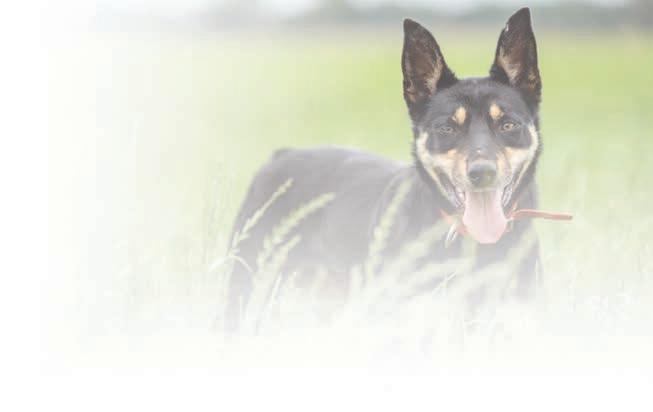




















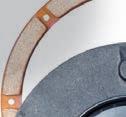




















































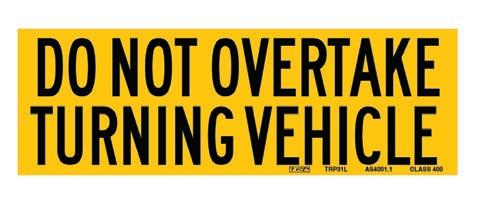























With supply lines back on track Australian truck drivers can expect to see plenty of new MAN TG Gen 3 trucks on the roads over the next 12 months. Warren Aitken took up an offer from the Penske team to give the German brand a drive, and he’s glad he did

Full disclosure here to start with, I may have over 20 years of on-road experience behind me, sitting behind the wheel of a massive variety of vehicles. I’ve mixed it up with cabovers and conventionals, round towners and road trains, from the biggest to the smallest. I have managed to get some time in most manufacturers’ trucks and in countless configurations. There are however a few brands that I haven’t had the pleasure of racking up many hours in and one of those is the German giant MAN. Hence when I received the invite from Penske Australia to come along to a drive day and test drive
the latest generation of their TG fleet I jumped at the opportunity.
Before the drive day my MAN experience was limited to a quick trip to Sydney back in 2016, taking a decade-old Gen One TGA down the Pacific Highway. With a fully loaded B-double in tow, the decade-old truck honestly felt like it had more wheels than horsepower. Thus, the opportunity to check out the newest Generation TG range was one that I couldn’t pass up. It also ensured I went in without bias or preconceptions.
Whilst the TG 3 range from MAN was officially launched last year by Penske Australia, this year is big for the brand for a couple of other reasons.
Firstly, the supply issues that have hampered every single manufacturer have started to ease and for the MAN brand that means more stock is getting into the country and into customer’s yards.
And secondly, 2024 sees MAN Truck & Bus celebrating 100 years of diesel technology. Yup, back in 1924 the original idea was started by Rudolf Diesel and patented by him when he was working TOP: The MAN test truck offered a striking presence LEFT: The 100th anniversary is part of 2024’s celebrations

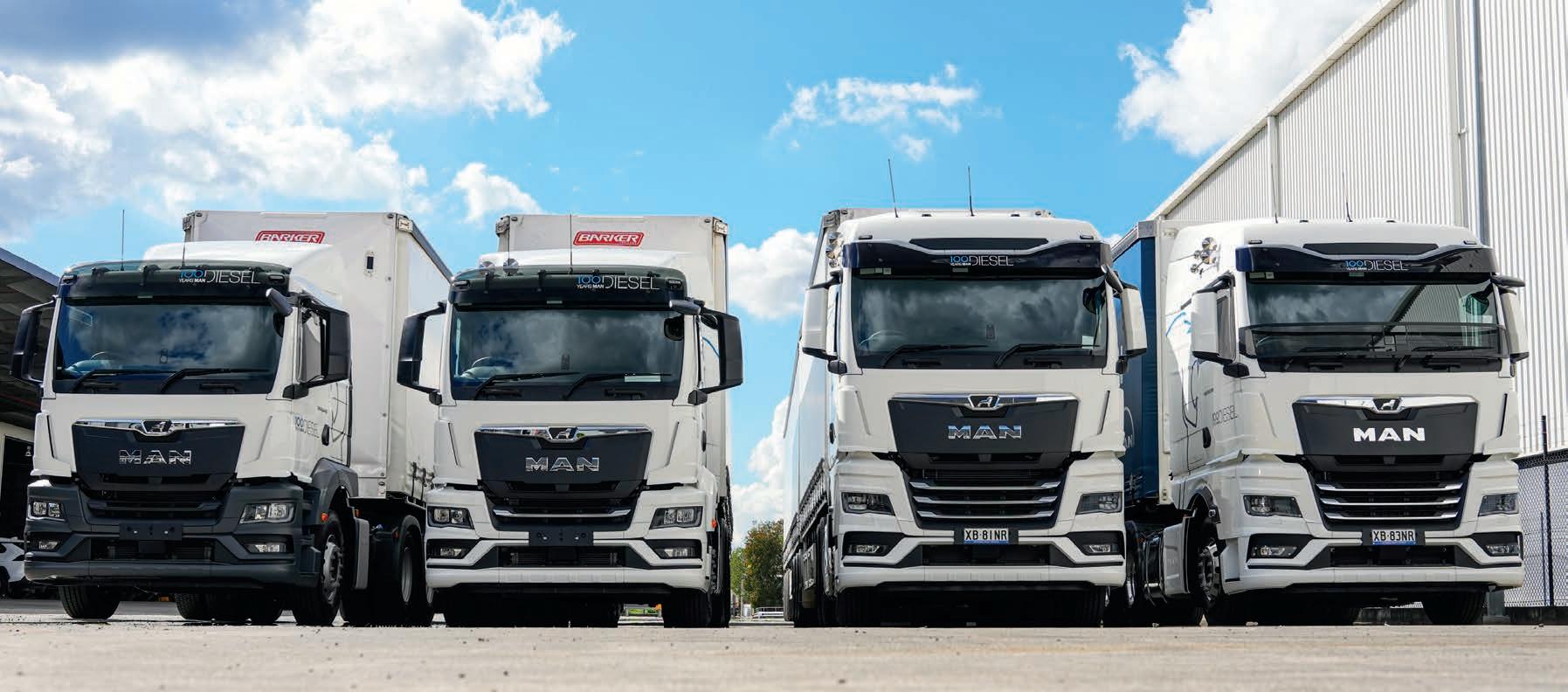

“THERE’S A MODEL AND SPECIFICATION THAT WOULD SUIT EVERY APPLICATION AND ENOUGH CREATURE COMFORTS TO PLEASE EVEN THE FUSSIEST DRIVER.”
for Maschinenfabrik Ausburg-Nurnberg (see where the MAN comes from now). A decade after he mysteriously passed away his creation was placed into a MAN Saurer truck and became the first direct diesel injection-powered truck. It was a groundbreaking innovation and over the next 100 years, the MAN stable has carried on that tradition of state-of-the-art technology. With their newest generation TG range, they have raised the bar again, not just in technology but in driver ergonomics and creature comforts.
The new MAN TG 3 range comes equipped with a truck for nearly every application. From the TGL/M CC cab, affectionately known as ‘The Compact One’ to the TGS NN Cab, dubbed ‘The Practical One’ all the way up to the TGX GX cab, appropriately known as ‘The Maximum One’. Their array of options is complimented by their extensive powerhouse options. MAN’s economical engines range from 250hp D08, up to their premium D38 Euro 6E with a whopping 640hp and many levels in between.
Whetting our MAN appetite at the Penske drive day were a couple of trucks from the TGS and TGX stables.
The TGS range has been designed with the local, intrastate and general freight markets in mind. With engine options of either MAN’s D20 or D26, giving the TGS trucks a horsepower range from 440hp up to 540hp. Whilst these models are not specifically aimed at linehaul work, they have all the tools needed to pop them down the road for the bigger jobs if needed.
If Linehaul or heavy-duty work is your core business though, you would be looking straight at the TGX range, which has three variants — The GN cab, the GM cab and the GX cab.
Like the TGS range, there is a choice of powerplants as well. There’s the D26 as seen in the TGS range, and now the big bertha, the D38.
The three cab variants all have the same massive dimensions — 2.44m x 2.28m. However, once you get up into the GX cab you have a whopping 2.07m of headroom. Putting that into perspective, it means Boston Celtics’ star Jayson Tatum could happily stand up in the cab, or conversely Danny DeVito would need a two-foot vertical jump to close the roof vent. It is a huge cab.
Seeing as the majority of my driving work is linehaul as opposed to local I opted to bypass the TGS options and jump into the two TGX models on display. Full credit here to the Penske team for their organisational skills in setting up the drive day as well. Rather than a lap around a test track, it was a case of ‘three hours on the highway, go enjoy the experience’ so that’s exactly what I did, starting with the MAN TGX 26-510 GM cab.
As previously mentioned, I was jumping into the MAN experience without any preconceived ideas. No hangover from
the TG 2 series, no ‘I hope they’ve fixed that’ kind of mentality. I was a blank slate. Blank as I may be, there are certain expectations when you go for a drive in a European truck. You expect it to be comfortable, you expect it to be quiet and you expect to be a little seasick when travelling through successive S-bends. Those familiar with Euro trucks understand the tradeoff for absorbing the harsh corrugated highways that span this country, is enduring a little more sway in those same comfy European cabs. However, the new TG 3 range has somehow managed to find the perfect compromise, and it works for everyone. The driver, the truck and the owner. The Engineering experts at MAN have changed from their single-leaf front suspension support to a more solid three-leaf set-up. What this means and what you can feel as soon as you turn out of the first driveway is that the whole cab has stiffened up and you don’t feel like you’re floating around. It leads to a much more in-touch feel with the truck and the road. Now the downside is that you do tend to feel the bumps a bit more, but you definitely do not suffer the bumps.
As far as the other two givens expected of a European truck, quietness and comfort, the MAN does not disappoint. The insulation in the new TGX was extremely impressive, inside the cab I was recording my interview with MAN guru Shannon Mair and on playback you could not have picked we were inside a truck, pulling 62 tons up the Minden Range. The external sunvisor creates a bit of wind noise, but if you were cranking

TOP LEFT: A smooth ride is part of the joy of driving the new MAN
ABOVE: The TGS-26.440 model has plenty of power for this job
BELOW: The new steering wheel allows clear views of everything a driver needs to see on the updated instrument panel
OPPOSITE BOTTOM: The spacious cabin offers a wide array of creature comforts designed to make a driver’s life as easy as possible


the outstanding MAN sound system you would never notice it. Comfort-wise, as I mentioned you knew the bumps were out there with the new front suspension, but the ride was smooth enough that I could easily have left my coffee on the floor and not spilt a drop.
When it comes to the performance of the D26 and the 12-speed Tipmatic transmission you can’t help but be impressed. We pulled out of the Wacol yard with a B-double on that was topping just over 60 tons and although I wasn’t setting any new Quarter Mile records the D26 gave no indication that it was struggling. Keep in mind I did the entire trip in MAN’s efficiency mode, as opposed to its powerful mode. The very instinctual 12-speed was spot on with its changes in the undulating trip and I was nothing but impressed. Jump forward a couple of hours when I got behind the wheel of the D38powered TGX 26-580 and I went from impressed to gobsmacked. Exactly the same weights, on the same road and the D38 setup just chomped away at the hills. I experimented with both the powerful mode and the efficiency mode. With the Tipmatic changing down a little higher and holding a little longer you could really get a sense of the horsepower. I must admit though I had more school kid giggles leaving it in efficiency and seeing the D38 lug down as far as 1050rpm and hold on like it was a pleasure to do it.
It is easy to see why so many people are impressed by the running gear of the new TG 3 series, and rightfully so. It needs to be noted though that it’s all the other aspects that aided in this truck winning the 2021 International Truck of the Year award.
There has been a lot of effort gone into the TG3 range that sees the truck intuitively tuned to the drivers and their needs. From little things, like the addition of door-mounted programable switch options that allow drivers to effectively turn on the likes of their hazard lights without needing to climb into their truck, to more major features like the electric-assisted steering. This feature sees steering torque electronically added when manoeuvring at
lower speeds, then under on-road conditions, the added torque decreases to maintain a firmer feel under speed.
As a driver I should have been most impressed by the factory-fitted sound system that got properly tested with some Dire Straits however the truth is, most of my feedback came from how impressed I was with the MAN Brakematic feature. This, ‘smarter-than-your-average bear,’ setup allows you to hold your foot on the brake for a couple of seconds at whatever speed you require, thus engaging the MAN’s full braking capabilities to automatically hold that speed. It’s pretty much a downhill cruise control that is extremely easy to engage. It’s a fantastic feature to help avoid overspeed off the smaller hills and it was something I made plenty of use of during my time behind the MAN wheel.
I am sure I’m running out of time, even if I’m not running out of things to say. There are just a few other features that carry across the TG range that ticked the boxes for me as a driver.
The newly designed steering wheel and dash layout is as close to perfect as a driver would want. The SmartSelect wheel is easy to operate and simple to reach, even for fat little fingers like mine. Although it is a smaller steering wheel than in the past it does not encroach on any of the state-of-theart digital dash. Meaning much like when using the smartly designed MAN mirrors, I did not have to duck and weave in order to drive and see what was going on.
I also need to note down the less visual, but extremely practical, changes that have led to the success of the newest generation MANs. Things like the redesign of the engine tunnel, allowing for a flat floor in the TGX models and a significant airflow increase around the new D26 and D38 engines. The room around the engine helps keep the engine bay cooler, and subsequently makes the engine a lot more efficient and effective.
Another win in the design stakes was the decision to incorporate the AdBlue tank into the right-hand

side fuel tank to make better use of the limited space available. This means the TGX model I had the joy of driving was able to pack on 1200lt of fuel and 80lt of AdBlue.
I may have only gotten one day sitting in the comfy Recaro seats of the new TG3 MANs, but I have to admit they have produced a seemingly perfect product. There’s a model and specification that would suit every application and enough creature comforts to please even the fussiest driver. I can’t wait to get the chance to hook up a B-double to the new MAN and tackle that Pacific Highway again.
Warren Aitken was lucky enough to catch up with Bob Gowans from Penske Australia to find out more about the latest Detroit engine range to feature in the Western Star X-Series trucks
To say attending the Penske drive day was a big day out is an understatement. Not only was the new MAN range on show, so too, was a range of Western Star X-Series trucks and the new Detroit engines that power them.
In next month’s OwnerDriver I’ll share a little more about driving the X-Series – a drive I’ll do with a much better knowledge of the engine beneath the big bonnet than I had a few weeks’ ago.
I’m never going to be one of those guys who understands all the technicalities and intricacies of any kind of engine. I like to drive, and as long as the engine under my feet is making pleasant purring noises then I figure that’s enough.
I do understand passion however, and when I sat down with Detroit Business Manager at Penske Australia Bob Gowans recently so he could give me the low down on the latest iteration of the legendary Detroit engines, he exuded passion.
His passion for all the engineering excellence that has gone into the 5th Generation DD13 and the current rendering of the big bore DD16, was second to none. It’s the kind of passion that has been at the forefront of Detroit’s success since it first cranked out its diesel engines back in 1938.
Now, more than five million motors later, Detroit is setting the standard again with its state-of-theart 13-litre DD13 and its biggest motor to date, the DD16, which is setting new benchmarks in efficiency, economy and reliability.
In the good old days of Detroit’s illustrious Series 60 engine, it was all about power. A bit of smoke was a badge of honour among truckies, with injectors getting some loving just to ensure there was more smoke than ever. These days however we
are governed by legislation and long complicated restrictions. Tightening emissions standards have seen amazingly successful engines, like the muchloved Series 60, put out to pasture.
It’s a clean green world influenced by American EPA10 legislation and the Euro 6 standards. All leading to Australia’s soon to be enforced ADR80/04 regulations. These rules put immense pressure on the designers of engines to be as clean as possible. It’s why back at the turn of the millennium Detroit began work on a whole new platform. Leaving behind the Series 60 in favour of the new DD Series engines.
What makes these engines so great is the forethought and ingenuity that has gone into their design. The team at Detroit could see decades ago where the world was heading with emission control and subsequently, the new platform has been designed not just to see the DD13 and DD16 sit well above what is currently required, but also to have the capability to exceed future restrictions.
When I enquired from Gowans as to exactly what all that means, his passion brought out all manner of explanations — which I then got him to repeat in more of a `dumbed down’ response so I could understand.
“The big thing about an engine is all you are trying to do is make heat. Making heat to push the cylinder down to turn the wheels. The more useful heat you can get out of it the better,” Gowans says.
“The more heat we can get out of it, the more efficient the engine is but unfortunately the more toxic NOx comes out. Hence, the new DD engines have been designed from the word go to have several ways of being able to control the NOx both inside and outside the cylinder. That means we can run hotter,


make a more efficient engine that gets more power to the wheels whilst using less fuel and still meet the emissions requirements.”
Dumbing it down a little more, the enlightened engineers have designed an engine that manages to get rid of more of the pollutants, more thoroughly and more efficiently whilst creating more power. In fact, the Gen 5 13-litre DD13 is hitting max figures of 525hp and 1850ft/lb. Whilst the DD16 tops out at a whopping 600hp and 2050ft/lb.
With the new platform, Detroit have looked at more than just meeting the government requirements. They have also looked at the operators and how they can assist in keeping their running costs as low as possible. With fuel prices being a major expense for any operator, making the engines more fuel efficient, without compromising performance, is huge. So far, Gowans says things are looking good.
“We don’t like to state the new engines are a certain number of per cent better, as every truck is doing different things,” he says.
“We have some customers doing B-double work and they are seeing 6 to 9 per cent better than the fleet average.
“Then we have a couple doing three and fourtrailer road train work in Queensland getting 9 to 11 per cent better than the fleet average.
“We look at those numbers over 100,000km as well, not just a week or two, to get a fair representation”.
It really seems like Detroit has come up with a state-of-the-art engine package that can be utilised in so many different scenarios.
They’ve managed to enhance, and even extend, that low-range pulling power that the old Series 60s were renowned for. That flat torque range that just made you feel, as a driver, that you could simply leave the engine to lug away and it would crest the hill without costing another gear.
Modern technology has ensured that these new engines are working more efficiently and more effectively, leaving less behind to upset our atmosphere, and, in time, I believe the new DD13 and DD16s will carry the same mythical stature created by their predecessors.





@ 1,800 RPM
1,850-2,050
lb-ft @ 975RPM
Extreme duty and heavy hauling for your biggest jobs
Detroit’s most powerful truck engine ever, the DD16 boasts up to 600 horsepower and 2,050 lb-ft of torque. The big bore workhorse provides efficient and dependable power and performance without compromise.
Advanced combustion and aftertreatment technology exceed future emissions requirements whilst retaining exceptional fuel efficiency and uptime.
This power, performance, and efficiency are backed by the most comprehensive warranty and extended coverage packages, ensuring the highest level of support for our customers.
When you buy a Detroit product, you’re buying billions of miles of engineering excellence. Tried and true, Detroit engines are built to ride the roughest roads.
With Detroit, there’s no compromise.

NHVR Paul Salvati

Boosting awareness, enhanced enforcement action and a renewed focus by industry have been critical in slashing the number of dangerous and disruptive overheight incidents across the Sydney metropolitan area in the past 12 months.
Safety is always the top priority at the National Heavy Vehicle Regulator (NHVR), and it was why – following a series of avoidable incidents involving overheight vehicles – the NHVR and Transport for New South Wales (TfNSW) were committed to pulling every possible lever and working closely with industry to ensure both the safety of motorists and the protection of vital infrastructure.
These have included TfNSW increasing the fine for overheight trucks that ignore low clearance signage to $5,500, with drivers also able to be issued with 12 demerit points.
TfNSW may also suspend a driver’s licence for up to six months and may issue a registration suspension for trucks for up to six months.
We’re pleased to see the number of incidents has dramatically improved since the measures were introduced, with incidents involving overheight trucks across New South Wales having fallen to the lowest level since 2017.
According to TfNSW, the first four months of 2024 have seen 19 fewer incidents than in the same period last year – a reduction of almost half, from 39 to 20 incidents.
In the same period TfNSW issued eight overheight trucks with registration suspensions, and seven with licence suspensions.
It follows a $5 million investment in infrastructure and improvements from TfNSW across Sydney last year to prevent such incidents occurring following a spate of avoidable disruptions, including improvements to the Sydney Harbor Tunnel, revamped signage and advertising billboards.
At the NHVR, we enhanced our measures to educate through dedicated advertising on social media, radio and online, and developed a brochure translated into three different languages to further inform drivers on what steps they can take to ensure incidents are avoided.
Industry members have played a crucial role in the success over the past 12 months, and we thank them for their ongoing commitment to training their drivers and ensuring routes are appropriately managed and planned.
With every incident causing traffic congestion, potential damage to costly
PAUL SALVATI, NHVR Chief Operations Officer
infrastructure and putting the safety of both the heavy vehicle driver and other motorists at risk, becoming complacent on this important issue is simply not an option. That is why at the NHVR we remain vigilant in educating and improving our strategies to communicate to drivers about how to avoid such incidents.
Drivers may not be aware, but New South Wales has more tunnels and bridges with low clearances of less than 4.6 metres than any other state in Australia.
Roads leading to tunnels and bridges which may be of concern are equipped with an array of sensors, median strips and signage to warn drivers of what is ahead.
These important infrastructure elements are critical in avoiding a potentially catastrophic incident – and it is important to be aware of what such warnings are telling you.
Following these warnings could not only save a hefty fine and the potential loss of your licence, but also stop thousands of commuters being stuck in traffic and prevent a significant blow to costly transport infrastructure.
Not being caught overheight prevents disruptive traffic blockages, and just one incident can cause peak hour pain for thousands of commuters – and grind Sydney to a halt.
For operators, it can mean huge fines and costly expenses such as for emergency response vehicles.
And while implements like warning signs are an important part of alerting drivers that their heavy vehicle is overheight –these are a last resort.
At the NHVR, we understand that driving a heavy vehicle comes with increased challenges.
Fortunately, there are a number of preventative steps which can be taken to ensure vehicles don’t end up somewhere they shouldn’t be.
“…incidents involving overheight trucks across New South Wales having fallen to the lowest level since 2017.”

Operators should ensure heavy vehicle loads are being measured each time they are due to hit the road – even if it is believed the height is already known.
Remember, heavy vehicles higher than 4.3 metres have restricted travel conditions and must use only approved road networks.
It is essential for operators to ensure routes are appropriately planned before departure to make sure heavy vehicles are only travelling on roads and through tunnels and under bridges where permitted. There is not a single driver out there who wants to end up on the nightly news as the one who caused traffic chaos for thousands of commuters, damaged expensive infrastructure or – worst of all – injured themselves or others.
Safety on our roads is everyone’s responsibility, and we know that the vast majority of drivers and operators do the right thing.
Keeping vigilant about the height of your heavy vehicle and where you can and can’t travel must remain a top priority for every driver hitting the road.























Over the past month I’ve had the privilege of taking our recent wins and plans for safer and fairer road transport to the broader union movement—not just in Australia, but on the world stage.
The transport reform laws that are soon to take effect are world-leading, and they have come about because workers, employers, industry and unions have worked together. That’s something to celebrate.
At the beginning of June, the whole Australian union movement came together for the first time since 2018 for the ACTU Congress.
Usually Congress is triennial, a chance to regroup as a collective and set our goals for the coming years. The pandemic foiled 2021’s efforts to hold an in-person Congress, and so we’ve had six years to reflect on.
It’s been six massive years in transport.
In those six years we’ve seen the importance of road transport, getting goods across closed borders during the pandemic and navigating floods, fires and other natural disasters.
We’ve seen the upsurge in AI and automation, with challenges but also opportunities for us to enhance safety and worker consultation instead of taking it backwards.
Six years ago, the gig economy was still relatively new. Food delivery apps were only a year or so old. Amazon had only just arrived on Australian shores. Even then, we knew the dangers it would pose to the entire transport industry.
Now, in 2024, we are soon to see new laws come into effect that will allow standards to be set in what has been the Wild West of the gig economy.
This is a huge achievement that’s been won by the whole road transport industry, a world-first approach, and it was a privilege to be able to take that to the Australian union movement.
ACTU Congress also heard from Nabin Adhikari, a gig worker in Canberra who’s been a key voice in the fight to win transport reform. He’s now a delegate and health and safety rep in the food delivery space—for him, minimum standards will mean he can make better, safer choices on the road without the constant fear of being kicked off an app by an algorithm.
For the road transport industry, those gig standards mean drivers and operators won’t be undercut for
workers who are exploited and on below minimum wages and conditions.
We also heard from Tony Matthews, an owner driver who’s been fighting for transport reform for 20 years, alongside many other stalwarts of the industry. Though nearing the end of his own career, he’s taken part in countless convoys, lobbying trips to Canberra and other events fighting for the next generation to have a safer and fairer industry.
Soon owner drivers and transport operators will have more protections against unfair contract terminations, and clients at the top of the supply chain will be forced to take responsibility for safety and fairness throughout their supply chain. We have to keep working hard to get those standards in place.
AI and automation is something that’s drawn a lot of attention and will have huge impacts on our industry. AI will leave no job untouched and it calls for a united approach—across the union movement, but equally across industries and across the globe.
We’ve seen from the gig economy that our laws will not keep up with technology if they are not flexible and cannot adapt.
Recently we saw automated truck trials in Victoria announced via an
Transport House, 188-390 Sussex Street, Sydney, NSW 2000. twu@twu.com.au
BELOW: Will the trucks of the future drive themselves like this Tesla Semi?
email notification of a lane closure on a toll road. There was zero consultation with the industry or the public. This is an unsustainable approach. We cannot move forward without industry being at the centre of decision-making.
Consultation must be built into the system as technology progresses— consultation with drivers, with transport operators and with the wider industry. We have seen in action the positive results we can achieve when the whole industry is involved.
In fact, the new transport reform laws will be critical in dealing with new technologies and ways of working. The road transport stream of the Fair Work Commission will be able to deal with anything transport-related— that includes automation, transition to net zero, driver surveillance and all sorts of other AI influences we don’t even know about yet. Ultimately the priority should be on jobs, safety and service.
I was also recently in the US for a Service Employees International Union (SEIU) convention and had the chance to talk about gig workers and the upcoming laws here.
The road transport landscape in the US shows us what is coming to Australia if we don’t get good standards in place as quickly as possible.
Truck drivers working off apps and driverless cars are now a matter of course in the States. We’ve seen the lack of standards Amazon Flex drivers in their own cars or vans have faced in Australia. Extend that to trucks with Amazon Relay in the US and you’ve got a dangerous recipe.
That’s why unions around the globe are looking to the TWU for guidance on how to ensure that gig work supports transport standards rather than gutting them.
We’re working with the International Transport Workers’ Federation, other US unions and employers internationally to get those standards to more areas around the globe.
“It’s been six massive years in transport.”
We will soon have a powerful tool ready to use to start reforming road transport for all participants. We are busy working with the industry on what those standards should look like. It’s up to all of us to be involved in that process, front and centre in the decisions that will shape the future of our industry.













The 27th edition of the Alexandra Truck, Ute and Rod Show showed just why the Victorian event is touted as one of the best of the year, as Alex Catalano reports
The Alexandra Truck, Ute and Rod Show is a show that should be listed as a ‘must-see’ in any trucking enthusiast’s calendar every year. Located just north of Victoria’s picturesque Yarra Ranges, it’s as good a tourist spot as you could find.
Battling the conditions was the first task. Rain was pelting down across the whole drive up in the morning, and temperatures barely climbed even when the sun finally peeked back through the clouds.
But this didn’t deter much of the 3000-strong Alexandra population, or the thousands of other visitors from elsewhere, from coming to marvel at all the gear on display along the bustling Grant Street.
Some arrived as early as the darkness of 4am to set up stalls and bring their trucks or cars in, making for a long day indeed, considering it didn’t wrap until 5:30 in the evening.
The 27th edition of the show was as good an


advertisement as any show could get though, as all that effort clearly did not go to waste.
Shopkeepers and cafés threw open their doors early too, prepped and ready to service the 18,000 attendees making their way through the town with coffee and food galore.
“We don’t allow food trucks, so local community groups run the food stalls,” organiser Andrew Embling says.
“Economy wise, for our little town, it’s fantastic what it does. It helps those little shops for the next six to eight weeks for the quiet times over winter.”
There was no shortage of food options aplenty – roast beef and gravy rolls, sausages fresh off the sizzle, pies, pastries and sausage rolls in all their crumbly glory.
If you wanted something different, there was even one stall selling Korean cuisine – not something you see at every show.
But the biggest highlight was the vehicles themselves, of course. Trucks lined the middle and sides of the main street for about three kilometres, spilling over onto the side roads too.
Hardly a single one wasn’t being admired by trucking fans young and old, sparking conversation everywhere.



“We registered about 320 trucks, 45 utes and 15 rods,” Andrew says.
“There were trucks coming in after registrations. We stopped registrations at around 8.30am in the morning.
“There were some pretty schmick trucks here.”
Attendees were shoulder to shoulder moving just to get a look, the trucks down the middle serving as a guiding light.
There was something for everyone on the truck side from classic Kenworths and Macks to slick looking Volvos and old Internationals.
Ribbons hung off the front of trucks entered for the awards, proof of the hard work every single owner went through to get their rig looking spick and span for judging.
Looking at the names adorning the sides of the trucks, it was evident that people had come from all over the nation to get to Alexandra.
“People have come from everywhere. There were people there from South Australia – Riverina, New South Wales area,” Andrew says.
“A lot of people out of Gippsland.
“I reckon we had more people out of Melbourne than we normally do.”
One of the highlights was the tunes blasting all day from the main stage, with Melbourne musician Brooke Taylor and her band The Poison Spitting Gin Queens offering folk, blues and country style songs from her

growing list of albums. Multi-award-winning country musician Paul Costa took to the stage as well, his renditions of old classics and his own catalogue bringing people onto their feet.
Speakers positioned throughout the town made sure you didn’t miss a second of the music on offer – or any show announcements.
The tunes were only interrupted for the charity auction, selling off chopping boards, Kenworth memorabilia and more. It was quite a sight watching the winners carry their spoils, sometimes as big as a mini fridge, back down the road.
“The auction raised around $19.5k,” Andrew says.
“This year we are supporting our scouting group going to the Jamboree in Maryborough (Qld).
“We’ve guaranteed them at least five thousand, but we hope to be able to give them some more.
“There’s a few other smaller charities that we keep giving to as well – some of that will go back into the mental health program we’ve got going too.”
There was a whole area dedicated to the younger enthusiasts in attendance, full of showbags, rides and show games proving to keep even the most unsettled children entertained.
In this corner was also the woodchopping, as the skilled axe wielders battled it out for prizes of up to $500 in what’s usually the last competition of the woodchop season.



Best Fleet – SRV Road Freight (Aaron Reid)

Best Log Truck- Stuart Moloney (Moloney Logging) – 2022 Kenworth T909


Best Specialised – Modern Towing & Salvage – 2022 Kenworth 610

Best Volvo – Vince Tropeano (SVT Logistics) – 2024 Volvo FH540
Best Western Star – Joel Leech (FourMile) – 1994 Western Sstar 4964F Heritage
Best Peterbilt – Matt Garcie (Freestones) – 1993 Peterbilt 379
Best Mack – Cameron Calleja – 1976 Mack R Model
Best Kenworth – Dylan Slater – 1995 Kenworth T600
Best of the Rest – Raymond Bedggood – Peterbilt

Best Tilt Tray – Blake Berwick-Griggs – 2014 Kenworth T359


Best Tray Truck – Ben Williams – 2021 Scania G450
Best Tipper – P&E Humphrey Haulage – 2023 Kenworth T909

Best Vintage – Aaron Smith – 1996 Kenworth K100G

Under 12 Months – Andrew James (Jamesys Transport) – 2023 Mack Superliner
Runner Up – Andrew James (Jamesys Transport) – 2023 Mack Superliner


People’s Choice – Trai Hildebrand (A Plus Towing) – 2023 Scania R620 XT Truck of the Show – Damien Reed – 2022 Kenworth T909
The crowd continued growing, with hundreds making their way over to Rotary Park to see the best in action.
Anticipation was high as the day drew closer to the end, with transport and enthusiast judges eyeing up each rig throughout the day.
As was expected, competition was fierce this time around, with every entry vying to take home one of the coveted trophies.
Damien Reed and his stunning 2022 Kenworth T909 ultimately claimed the top spot, taking home Truck of the Show.
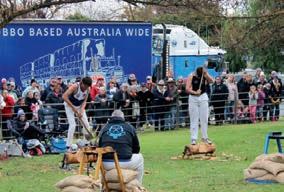
Top: The biggest rigs you’ll see.
Above, L to R: The fight for the goods and merchandise on auction was a tense one – sold, to the lady down the back!; Woodchopping pride was on the line on the day; Kennys were on display as far as the eye could see, in all shades and hues.
Below: There was a hustle and bustle to get close for the best view of the trucks rolling out.


In close second saw Andrew James from Jamesys Transport and his 2023 Mack Superliner, also pinching the Under 12 months spot.
SRV Road Freight claimed Best Fleet with its display of immaculate Kenworth’s while Dylan Slater took home Best Kenworth for his 1995 Kenworth T600.
It was a rough battle for Best Mack, with Cameron Calleja ultimately coming out on top with his beautiful 1976 Mack R Model.
Attendees voted Trai Hildebrand from A Plus Towing and his 2023 Scania R620 XT the People’s Choice winner while Raymond Bedggood’s unique Peterbilt took home Best of the Rest.
Once all the judging was said and done, we had front row seats to the main attraction as the trucks began to roll out of town.
It felt as though as nearly everyone in attendance stopped what they were doing to marvel at the noise and beauty of the rigs starting their journey back home.
Black soot and horns littered the air as they ushered their way home, making sure to show off one final time.
Plans are already well underway for the 28th year of the Alexandra show, with whispers that it will be even better and bigger.
Andrew hopes that next year he may finally be able to sneak away and take in the sights.
“I don’t leave the stage – in the 27 years I’ve been here I’ve never even seen the woodchop!”


ReconditionedMercedes-BenzTransmissions. MostMakesandModelsG100,G131,GO210, G240,G280,G330available.S3. TA431566. POA

Unit 1/71 Axis Place, Larapinta, Brisbane, QLD, 4110, Australia
Ph: (07) 3276 9300 Fax: (07) 3276 9301
Email: sales@ggd.net.au davids@ggd.net.au
Ph: (07) 3276 9300 Fax: (07) 3276 9301 Email: mattc@gibbsparts.com davids@gibbsparts.com Web: www.gibbsparts.com
Web: www.gibbsparts.com

ZFEcolitepowerpacks.S40. TA952390.


Allmakesandmodelsavailable.S11. TA431615. POA

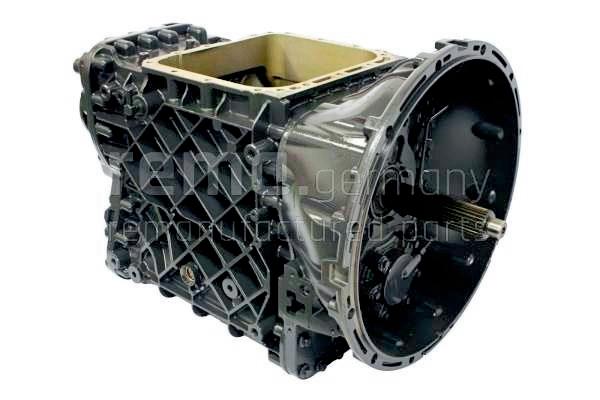
VOLVO/MACKI-SHIFT/M-DRIVE AT2512C,AT2612D&ATO3112D. S44. TA952399. POA ZFTRANSMISSIONSALLMODELS Allmakesandmodelsavailable.S10. TA431606. POA


When Sprenger’s Rural Traders went looking for a new truck to add to its impressive fleet an XXL Volvo made the top of the list. Warren Aitken went on site to meet the team and see the truck at work



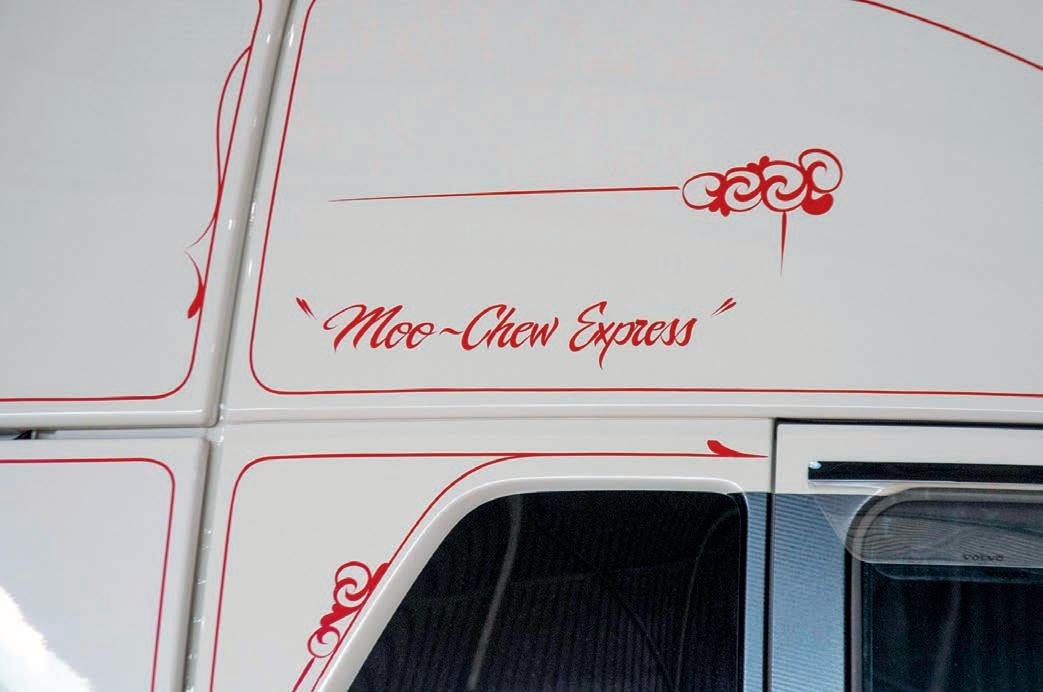
“I asked him what he wanted and he didn’t hesitate — he wanted an XXL Volvo. I reckon it pleased the old man though, we’ve had Volvos since we began.”
They do say good things come to those who wait and Dan ‘Hutcho’ Hutchison has been a very patient man waiting on a very good thing. Nearly 18 months’ worth of wait to be honest, but the end result is another stunning truck added to a fleet of stunning trucks. Meet Sprenger’s Rural Traders. The family rural supplies store with a stunning truck addiction.
The Sprenger’s trucks are a common sight amongst the rural foundations of Australia, carting hay, chaff, molasses and every other necessity needed by Australia’s country backbone. With a fleet comprising almost 50/50 of two Australianbuilt workhorses, Kenworth and Volvo, this newest Volvo parallels Australia’s current truck sales stats and tilts the numbers slightly towards the Aussiebuilt Swedish workhorse.
The young man in charge of the transport side of the family company is Matt Sprenger and it was he who placed the order for the latest truck and tilted the fleet ratio to the Volvo side. He may wear the big Kenworth belt buckle and waiver more towards the KW Bug himself, but he likes to look after his drivers and listens when they put in their preferences.
“We were ordering a new one for Dan, I asked
him what he wanted and he didn’t hesitate — he wanted an XXL Volvo. I reckon it pleased the old man though, we’ve had Volvos since we began. They’ve been great trucks,” Matt says.
The Sprenger family have been in business for over 60 years.
Matt is the young fella looking after the trucks now, but it is truly a family business, of which the trucks are merely one aspect.
It all began back in 1964 when a young Malcolm Sprenger and his wife Nannette started a roadside fruit stall. Malcolm was one of those driven workers who had been working for himself since before Moses played halfback.
There are reports his first business was selling Bunya Nuts to his classmates in primary school. In 1964, when he had a load of produce turned away at the Brisbane Markets, rather than throw his toys out of the cot he decided to set up his own stall at
Left: Hutcho the Ex-auto Electrician is extremely happy with his new ride. Quiet, comfortable and powerful. He couldn’t ask for anything more
Below: The old and the new in the Sprenger’s fleet
















Above: The latest iteration of the Sprengers fruit and vege trailer now has no fruit and veges. It does however have all the rural supplies you need, as well as a second level in their new shop dedicated solely to clothing and footwear. And yes, I did do a little shopping myself
Right: The manoeuvrability of the Volvos makes unloading in the tight yard a breeze
Opposite bottom, L to R: The spacious cab makes living away from home a little easier and the custom storage boxes provide a welcome touch for the driver

the family farm and sell his produce from there. It was helpful that the farm, in Haigslea QLD, bordered the busy Warrego Highway and gave him access to plenty of customers. It wasn’t long before Malcolm and Nannette outgrew the simple trailer stall. The quality of the farm’s fresh fruit and vegies meant they were selling like hotcakes. Sorry, that’s probably the wrong comparison. The fruit and veggies were out-selling any hot cakes in Queensland. The result of their popularity was the Sprengers decided to construct a
purpose-built store, just for the family produce. Like any good businessman Malcolm found another way to diversify and added a BP service station as well, which opened the door to even more clientele.
Whilst the produce and petrol were the mainstay of the family operation, the farming supplies market was another area the family were branching off into, buying and supplying stock feed and hay to a lot of their regular customers. By this stage, Malcolm and Nannette’s youngest son and his wife, Ashley and Pauline, were knee deep in the family business as well. Their kids — Kristian, Kaitlynn and Matt were growing up with the same work ethic and family business pride that had seen the produce trailer grow to a purpose-built shop, fuel station and, by the 1990s, a rural trading hub.
In the early 90’s the Sprengers leased out the fruit shop and fuel station and would eventually end up selling it in the new millennium. The passion for the farming supplies, and in particular the hay and chaff, meant this is where the majority of the family’s efforts were going.
It is about now that we can start focusing on the truck side of things, although I will delve back to the awesome line of Sprenger’s clothing and hats that would eventuate. Not because it’s critical to the story, just purely in the hope of refilling my wardrobe with free merchandise. A bit of product placement can’t go wrong, right?
Trucking has always played a part in the family business. While Matt is in charge of ordering them now, the trucking


“Dad and Pa have always taken a lot of pride in everything they do, like their trucks — and I learnt from them.”
pedigree is deep. Before Matt’s grandad started the original family business, he had several trucks of his own.
“I’m a third-generation truckie now,” Matt says.
“Pa always had trucks for carting his hay and stuff on the farm. Little Mitsubishi’s and stuff. His first prime mover was a second-hand 1418 Benz. The first Volvo he bought was a second-hand F10. They were just used for carting our hay and chaff around. He wasn’t selling it, just to a wholesaler in Brissy”.
The family trucks were also used a fair bit for carting their own produce into the Brisbane markets for sale. It wasn’t just their family store that got to enjoy the fruits of the Sprenger’s labours.
As the composition of the family business changed, and the structure, so did the importance of trucks to the family’s success.
By the time Ashley was involved in the day-to-day operations there was a lot less time spent on the fruit and vege side and a lot more on the rural supplies side. The trucks the company had were not just carting farming goods for the family farm, they were now being used to deliver to customers.
The service the Sprengers were providing grew their popularity. The trucks were becoming as busy as the Rural Trading store they had opened on the family property.
In 2012 Matt’s dad, Ashley, bought the family’s first-ever brand-new truck, and it was sporting the same badge as the one you see on the pages before you.
“I think we may have had a new Mitsi, but we kind of count the FM Volvo as our first brand new truck,” Matt says.
“Dad had always loved the Volvos, for their comfort and economy. Ever since we got the first F10 and we stretched that to become a body truck.
“Dad had the new FM custom built like the F10. It was one of the first 420 FM Globetrotter and we had it built as a truck and dog.
“It was very different back in those days.”
If you have taken the time to look through the images before you read this, you would have



noticed the little blue FM sitting next to Dan’s big rig. You’ll also notice the effort that has gone into it. There weren’t a lot of people putting the likes of drop visors on farm trucks back then.
“Dad and Pa have always taken a lot of pride in everything they do, like their trucks — and I learnt from them. Every Saturday I’d join dad down on the wash bay, helping him hand wash everything, cleaning and polishing trucks.”
Once that first FM hit the fleet, things just started to grow. Not to national fleet size, that’s never been the Sprenger’s way. Every endeavour they’ve taken on has always been purely about servicing their customer base with top-notch service. Quality over quantity. After that first 420 FM the family followed up with several more. The FM Globetrotters’ truck and dog set ups were the preferred option up until they bought their first brand-new prime mover, an XXL Globetrotter in 2013. The truck was a cancelled order and almost fell into Sprenger’s lap, it was a fortunate situation that ultimately lead to the newest flagship.
That first XXL was the truck that Matt would eventually, with 1.3 million kilometres travelled, put his mate Hutcho in — when he first enticed him to down tools and come and work for Sprenger’s. It was also the catalyst for the truck you see now, the reason Hutcho chose the latest XXL when given free rein to choose.
“I started out as an auto electrician and used to work on all Matto’s stuff. I put most of the lights on the old girl when Matt was piloting it,” Hutcho says.
“I grew up around trucks. My old man ran an earthmoving business before I was born, up until about eight years ago, with an old V8 FV Mitsubishi converted from a tipper and tag to a beavertail body, then with a ’96 LTL Aeromax. And I knew from driving around the yard at home, I always wanted to drive.
“My real leg-in was through a customer of mine when I was pulling wires. They were still old school enough and gave a young bloke a chance.
I’d finish fixing trailers at his yard then have a nap in one of his near-new Western Stars. Then moonlight, doing changeover work at night and the occasional weekend Mackay trip.
“I did a bit of that for almost six years but was still mainly doing auto-electrical work.
“Then, when work was going quiet, Matt talked me into coming to work for him. They put me straight in a 2012 XXL Volvo with 1.3 million. It was showing its age. We gave it some love and it was a great truck.”
Hutcho cut his teeth with the old Volvo and when it came time to upgrade, it was the Volvo badge he was keen to stay in.
“They are an easy-to-drive truck. They know what they need to do. You’ll head up the range grossing 65 (tonne) and it just knows exactly what gear it wants to do it in.
“It’ll pull all the way down till you’re starting to doubt it, and then chop two gears and start walking off again.
“It’s the little bits as well. Like the small storage locker below the huge main locker. Perfect place to store gloves and stuff. Lots of driver-friendly bits.
“You also can’t beat the comfort, they’re just so good. Most weeks we might just do 8-10 hours a day of driving but even when you do 14 you don’t feel tired, you’re not sore. It’s so much better.”
Hutcho also loves the fact that even though there are a lot around there aren’t that many that have been pimped out.
“Most are just pretty standard, not a lot of people do the painted tanks, painted bull bar, rubber guards, all that kind of stuff.”
Sprenger’s Trucks are renowned for their stunning appearance. The base color may be white, but the use of scroll work and a bit of added customisation really brings out the country feel that seems appropriate for the work they do.
Icepack Services in Toowoomba, Queensland, was the team assigned the task of bringing the Sprenger’s look and feel to the big XXL Volvo. The team had already prepared Sprenger’s XL Volvo

“It is a truck you can go away for weeks in easily.”
earlier in the year so were pretty much onto the task. Aside from the cosmetic changes, like the stainless drop visor and customer storage setup behind the cab, there are the driver comforts added like the Icepack, TV, microwave and invertor with multiple outlets.
“It is a truck you can go away for weeks in easily,” Hutcho says.
“I’ve got plenty of storage, a TV, a microwave. There is one fridge and it’s huge. I can stand a two-litre milk upright in it.”
Aside from just keeping Hutcho the driver happy, the truck is a perfect fit for the family business. Its flexibility means Matt can send Hutcho off to do all manner of tasks. From simple hay pickups with one trailer, to hooking up to a B-double set full of molasses, and even hooking up AB triples or double road trains. The Big 700hp is rated for 131t and fully equipped to throw a triple behind if needed.
“It really is a great truck,” Matt says. “I jumped in it a bit when we first got it and Hutcho was off. It was so nice to drive.”
Words like that are often repeated around the new Sprenger’s Volvo and are no doubt music to the ears of Matt’s dad Ashley. Factor in that Hutcho’s previous Volvo racked up over 1.5 million before it was reluctantly let go, as well as the fact that Ashley’s original 420 FM Globetrotter is still earning it’s keep, and I reckon it is fair to say Hutcho’s stunning big Volvo will be part of the Sprenger’s landscape for quite a while.
Watching how much care Hutcho puts in whilst doing a job that has him spending as much time off the seal as on it, and I will also predict the big XXL will be looking pretty damn good for years to come as well.
It may have been quite the wait for the big Volvo to rock in, but it was definitely worth waiting for.



In global news, Hyundai Motor has announced a new partnership with autonomous driving software company Plus to unveil the first level four autonomous class eight hydrogen fuel cell electric truck in the US.
The new truck was announced at the Advanced Clean Transportation (ACT) Expo in the US, with Hyundai Motor’s XCIENT fuel cell truck to be equipped with Plus’ SuperDrive level four autonomous driving technology.
The truck is undergoing initial autonomous driving assessments in the US, making it the first level four self-driving test on a class eight fuel cell electric truck to take place in the country.
“We are excited to showcase our collaboration with Plus to test level four autonomous driving technology with our Class 8 XCIENT Fuel Cell truck,” Hyundai head of commercial vehicle development and executive vice president Martin Zeilinger says.
“Hyundai Motor has been driving the energy transition paradigm with our advanced fuel cell technologies. By adding autonomous capabilities to our world’s first mass-produced hydrogen-powered XCIENT fuel cell truck, Hyundai is looking forward to providing fleets and vehicle operators additional solutions that enhance road safety and freight efficiencies thanks to Plus’ industry-leading autonomous driving technology.”
The Hyundai XCIENT fuel cell truck was first introduced in 2020 and has already conducted commercial operations in eight countries worldwide.
Plus’ SuperDrive solution is currently being deployed across the US, Europe and Australia, using cutting-edge sensors to provide surround perception, planning,
prediction and self-driving capabilities.
“We are thrilled to collaborate with Hyundai Motor Company on this important initiative to create more
sustainable and safe transportation options,” Plus co-founder and COO Shawn Kerrigan says.
“A decarbonised future with autonomous hydrogen fuel cell
electric trucks that also improve safety and efficiency is one that Plus is proud to support with our cutting-edge autonomous driving technology.”

The DSE Transport team celebrated a big milestone this month, achieving AMCAS Certification for its dedication to safety and compliance in the transport industry.
AMCAS is the Master Code Auditing Service for Australia and New Zealand, designed to support and monitor compliance with Chain of Responsibility Laws.
The AMCAS certification process involves a comprehensive audit of a company’s safety management systems by a qualified auditor and
is designed to ensures the company’s practices align with the Master Code’s compliance principles, covering areas such as speed compliance, fatigue management, mass and loading, dimension compliance and vehicle standards.
To achieve certification, a company must score 100 per cent on the audit, after which a certificate of completion is issued, confirming their adherence to the highest safety standards.
Sharing the news with its customers, DSE Transport says the AMCAS certification signifies a “robust commitment to safety, reducing the risk of accidents and enhancing the overall reliability of
transport operations”.
DSE Transport, which is this year celebrating its 30th year of operation, has invested significantly in training and development programs to ensure all its employees are well-versed in the requirements of the Master Code and implemented advanced safety management systems to monitor compliance in real-time, ensuring any deviations are promptly addressed.
“This certification is not merely a badge of honour but a symbol of the company’s relentless pursuit of safety, integrity, and operational excellence,” the company says.
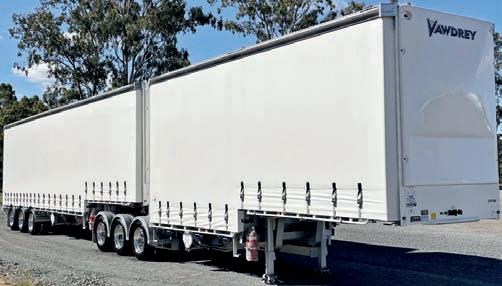




































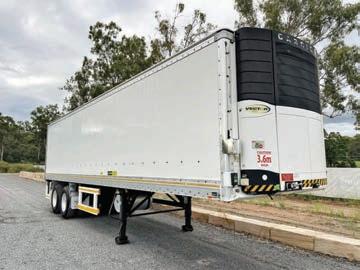



From owning one truck back in the 90’s to starring in his own TV show, Don Madaferri and TCB Trans have gone the distance as Tiarna Condren writes
Walking into the TCB Trans hub felt like entering a separate world.
Surrounded by red rigs and large sheds, they had created their own ecosystem where they could get everything done in one convenient spot.
Mechanical work? Check.
Truck wash? Check.
Man cave? In progress.
TCB Trans owner Don Madaferri says they could have never imagined this kind of success.
“I was born in the industry. My whole family were involved in the transport industry and since I was a little kid, I knew that’s what I wanted to do,” he says.
Driven with desire and an urge to prove himself, Don started small back in 1997 with one truck.
“I kept the truck in the driveway at home and let me tell you, the neighbours weren’t happy with me,” he laughs.
“There were oil leaks and stuff like that and they made it very clear they didn’t like it there.”


Unswayed by the negativity, Don kept his eye on the prize, slowly building up his fleet.
“To be honest, when I was a kid, I always wanted five trucks,” Don says.
“I’m not really sure why I was so set on the number five, but that was my dream for as long as I could remember.”
Little Don would be surprised to see he surpassed that number, with a whopping 64 trucks in his fleet now.
“I just kept buying another truck and another truck. We ended up having to hire a little block in Dandenong.”
It wasn’t long that with the trucks and gear, Don had out grown that place too.
“We grew with our customers. If they were going onto their next level, so would we.”
But with fleet growth, comes growth in every department.
“We had to sit down and figure out what to do because everything was just moving too quick around us.”
“We needed somewhere to fit administration, payroll, maintenance and all of that.”
That’s how they stumbled across their now home in Dandenong. A massive depot with multiple large sheds and buildings, it’s purposes and look is ever-changing.
“I always wanted my own little building with my name on it, but I was never expecting this.”
But Melbourne isn’t where this story ends.
Growing with their clients, TCB has seen the expansion of their business into Melbourne, Brisbane and Sydney.
“We started getting calls from multiple clients asking if we would follow them into different states.”
“We never planned for this, but they were great decisions.”
As the business grew, a need for a recognisable aesthetic became apparent.
“I knew I wanted something graphic on my first truck, and I wanted the paint to be red,” he says. “But I just didn’t know exactly I wanted, so I left it up to the painter.”
Upon returning to pick up his truck, Don was surprised to see a large eagle painted on the side.
“I was definitely a bit confused,” he laughs. “But I thought, well this is it. I’ll stick with it.”
Don continued the eagle legacy on all his future trucks, now becoming synonymous with the brand and cementing it into transport history.
“Everybody knows what one of our trucks looks like, it’s our branding.”


The success of TCB Trans was evident to everyone involved, even catching the eye of a TV producer.
“One of my friends mentioned that he knew a TV producer that was interested in our company and our story,” Don says.
“Obviously I thought it was some kind of joke and that he would never come and visit.
“But he did.”
The creator of Rides Down Under: Aussie Truckers was instantly taken by TCB and Don, knowing they would make a great match for television.
Unable to believe the news, Don says before he could even process it properly, cameras and TV crew came to his depot and started filming.
“I just couldn’t believe it; it was all so surreal.”
The first season of Rides Down Under: Aussie Truckers

aired in 2023 on Channel 7 with three episodes.
“I remember watching the first episode in a hotel room in Sydney. Watching yourself on TV is so bizarre,” he laughs.
Receiving positive feedback from customers and alike, the most common comment they received was, “we never thought the business was that big.”
“The way I look at it, it’s still a family business. My wife Maria and I do most of it and we never let anything get to our head,” he says.
Since then, they’ve been given the greenlight to film season two, with plans to air around mid-year.
With production well under-way, Don says they are excited to continue this journey.
“It’s hard work, just like any business,” he says.
“You’ve got to put in the hard yards to see a result and hope that it pays off in the future.”
L to R: You can always tell a TCB truck on the
from the distinctive colour and graphics; Only ever having the goal of 5 trucks, Don can’t believe his fleet is over 64 trucks
As August 3 gets closer, the excitement continues to build for the 2024 North Coast Petroleum Casino Truck Show.
The organisers have announced Movember as the beneficiary of this year’s charity auction, and Queensland-based Moore Trailers, has donated a 2.4 metre x 2.4 metre bar, shaped like the rear of a truck trailer, as one of the premier items to go under the hammer.
The truck lovers’ bar is made from steel, with mirror stainless ends and is valued at $6500. It’s described as being ideal for various uses, including entertaining and recreational activities.
To complement the bar, Engel Australia has donated a 95-litre upright fridge, valued at $1699, and, so the small truck lovers don’t miss out, Big Wheels Truck Alignment has donated an $800, 24-volt, kids’ four wheeler, which comes with a remote for those still learning to steer.
The charity auction will take place on Saturday 3 August at the Mafeking Lamp roundabout at 2.45pm, just before the trophy presentation.
Casino Truck Show organisers have sent a shout out and a big thank you to Moore Trailers’ Scott Gollan, Engel Australia’s Jason Dwyer and Big Wheels Truck Alignment’s Paul Whiting for their support of the auction.
As for the cause, Movember is a pretty good fit with truckies.
It is a leading men’s health charity that aims to bring awareness, research and fundraising for mental health and suicide prevention, prostate cancer and testicular cancer. Since its inception in 2003, it has funded more than 12,500 men’s health projects with more than five million people taking part.





While Movember will benefit from this year’s auction proceeds, as is tradition for the show, other local charities are in line to benefit from any money raised over and the costs of hosting the event. In 2023, the Casino Truck Show donated $10,000 in proceeds to important local charities, including the Westpac Rescue Helicopter, Casino Soup Kitchen and Jumbunna Community Preschool.
The Casino CBD will come to life on the morning of Saturday, August 3, when the trucks roll through town from 10am in the annual street parade.
Trucks will be parked up through the main streets of the CBD for everyone to enjoy, including the judges charged with finding the winners for the trophy presentations that start at 3pm.
Entertainment for the event includes Mossy Rocks and the Tony Q Band, who will be rocking out tunes from two separate stages. As well, there will be plenty of kid-friendly activities such as amusements rides and face painting. There will also be exhibitors’ showcasing industry-related products and services.
To add a bit more excitement to the day, J&J Rodeo will present a spectacular bull ride competition under the roof of the new arena at the Casino Showground on Saturday night.
Registrations for the 2024 North Coast Petroleum Casino Truck Show are open now.
Registration is $30 per truck, including competition entry and parking in the event precinct.
Online registrations can be made at the show website at www.casinotruckshow.com.au and these entrants will go into the draw to win some amazing prizes, including: a Lubecore 210 On-Highway Automated greasing system, valued at $5050; a $5000 voucher towards a Gozbar bullbar or bumper, supplied by Dawson’s Haulage; and 10 Austone line haul tyres valued at $4880, courtesy Tyre Network.
On-day registrations will also be accepted and can be completed at the Richmond Valley Council’s depot in the industrial estate from 6am.
Registrations for those not participating in the Dawson’s

Haulage Parade can be completed at the Casino Truck Show merchandise stall at the Mafeking Lamp roundabout.
ABOVE: The local fishing club will be serving up barbecue brekky
OPPOSITE PAGE: A premium bar and an Engel fridge are among the items up for grabs in this year’s charity auction
All entrants are encouraged to drop their speciallynumbered, on-day, registration ticket in the lucky draw barrels at both check-in points to go in the running for a $15,070 Wedge Lock Bullbar voucher, supplied by AJ’s Total Truck Gear and Kentweld Bullbars.
The industrial estate is also the marshalling area for parade participants. The parade will get underway at 10am sharp, making its way to the Casino CBD via Johnston and Centre streets.


The very fact truck driver’s memorials are to be found all over Australia is a sad indictment on the dangers involved in working on our highways
Goodaye all, writing this after making it home for a short visit on the Monday morning of the King’s Birthday long weekend, after spending the last few days at Alexandra for the truck show.
OwnerDriver will be covering the show in more detail, but I arrived there Friday night. While I missed the truck run in from Yarck, with about 40 involved starting 11am Saturday, I did attend the dedication ceremony for the Victorian Truck Drivers Memorial on the Saturday afternoon. I then stayed for the show on Sunday — parked down near the end. I was loaded and stayed hooked up and luckily then got away before many in the main street to get home for this quick break before unloading the following morning in Goondiwindi.
There are now over 200 names on the Alexandra memorial wall, with 13 added this year. I must admit the size of the wall worries me. While it may be beautifully built, maintained and well recognised, I fear there will be many more names to add before it is anywhere near full. It is a sad indictment on our industry that we need such walls to recognise those who have given their lives for, or after, the job.
There were two speakers this year, then two family members of those added to the wall this year who spoke of their loss. This was followed by the reading of the honour roll of those added this year, a minute’s silence and then the blessing and dedication awards for those involved with the wall since the start. With the ceremony completed, a laying of wreaths against the wall came next, followed by photos and a cup of tea served with biscuits and cake from the local community supporters.
Both of the family members who spoke struggled to contain their emotion at times and I did watch as a young girl walked over and comforted and hugged her Mum in the crowd, as she too was affected by the speech, the ceremony and the moment.
It is sad in many ways that we need
such places. While our industry is often deemed the most dangerous occupation in the Australian workforce, I spoke with a lady as we waited for the wreaths to be laid and she said: “without this wall, no one else would even know my husband existed and or gave his life in this job”. That is all too true of many truckies.
Our families and mates will miss us one day when our time is up and our name adorns the wall, whether it be in Alexandra or one of the other truckie memorials around the country. I believe all walls will recognise you, allowing your family to provide a plaque whether you died on the job, or after a lifetime surviving it, only to pass on later. But who else will? It was stated during the ceremony that this wall is the only one that does not charge a fee for a name to be included.
The job we do, while recognised for a short time as being important during Covid, has now reverted back to us being a menace, and trucks being in the way. There are many important jobs, but few have all the challenges we and our families face. While others may have more responsibility for hundreds or
ROD HANNIFEY, a transport safety advocate, has been involved in raising the profile of the industry, conducting highway truck audits, the Blue Reflector Trial for informal parking bays on the Newell, the ‘Truckies on Road Code’, the national 1800 number for road repairs proposal, and the Better Roadside Rest Areas Group. Rod is the current president of the NRFA. Contact Rod on 0428 120 560, e-mail rod.hannifey@bigpond. com or visit www.truckright.com.au
BELOW: Thirteen drivers were remembers and had their names added to the Victorian Truck Drivers Memorial Wall at Alexandra over the King’s Birthday long weekend
more staff, for big corporations and for those who live away from home, many of them earn a lot more and can retire early enough to eventually have some time with the family they might be away from at times.
But as always, I am preaching to the converted – if you are reading this, it is most likely you are a member, or at least involved in the road transport industry. How we get recognition and even some empathy from the public, I don’t really know. Do we need a campaign to educate the public about our job and the life we lead for them to have theirs?
We certainly need more education about sharing the road with trucks, so maybe we could find a way to do both?
Truck shows like the one at Alexandra may be the place to start. The town, its people and its businesses certainly get behind this one. The only other town which closes the main street for trucks, that I know of, is Casino, but it felt like the whole of Alexandra was at this event. From what I saw the show was very well run and organised.
One thing I was told while I was there is that the locals were concerned with the loss of the logging in the area and a future where the logging companies and trucks may also disappear.
Given the number of trucks attending the show, trailers are not the done thing, with only a couple of other single trailers involved for display and merchandise purposes. Despite that, I thank the organisers for finding a spot for me and allowing me to take part, with my trailers on, which is why I was parked down near the end of the trucks, around the corner.
As always, I must also thank Rod Pilon Transport for their support and allowing me to attend such events.
To all who made the effort to get to the Alexandra truck show, well done! To the organisers, bravo! And to all who attended, in whatever capacity, I hope you had as good as time as I did there. Safe travelling,
“There are now over 200 names on this memorial wall, with 13 added this year”.







In just its third attempt, Coasting the Coast welcomed a bigger convoy than it has seen yet along the scenic Pacific Highway. Alex Catalano reports
Expectations for the 2024 running of the Coasting the Coast convoy from Sydney’s north up to Newcastle were well and truly met over the last weekend of May with its biggest attendance yet.
The event, which sees trucks, cars, buses, motorbikes and more follow the route up the old and scenic Pacific Highway, jumped from 117 vehicles last year to more than 160.
Organiser Guy Ellis was awed by the turnout from the community all across New South Wales, with vehicles showing up from as far as Wollongong and Katoomba for the drive.
“It was so much better than I expected,” he says.
“There were some serious standouts, we had three Clippers and a Leyland bus. There were a few Diamond Ts and a couple of old Macks and Kenworths.”
Ellis was hoping for an increase in trucks on last year’s event, and he certainly got it.
“There was an increase in trucks,” he says, “about 20 per cent more than last year. We all heard an old Diamond T driving up through the cuttings, and the guy driving it said ‘I took my noisemaker!’”
While there were significantly more cars doing the journey compared to trucks, Ellis says the pure variety of vehicles on show made for incredible viewing.
“There were almost no two vehicles the same,” he says.
“I’ve never seen such a large array of different vehicles. From American stuff, Australian, English, Japanese, it was a lovely mix. Everyone’s seeing different types of vehicles and transport.”

Engagement with the community was just as strong as it had been in the past, with locals getting down to sit on the side of the road and watch the convoy pass from lookouts.
The drive took members to the local pie shop on the way, with the final stop being the Swansea Workers Club.
“People on the side of the road were taking photos, there were families waving us on,” Ellis says.
“It helps the community businesses. We had 250 people at the Swansea Workers Club for lunch. They were very happy with that as a little club. It’s our third year there, and they love having us and we love going.”
There was a minor change in plans for the starting time, due to the sheer number of cars that showed up.
Ellis had to send the trucks and buses off 20 minutes early to clear the
way for the cars to join the convoy, but this ultimately offered more opportunity for the community around Coasting the Coast to get involved.
“We had 143 cars at the car park,” he explains.
“Luckily we had a few club members, one being only 16 years old, to park up the cars and trucks. Everyone putting in makes a huge difference.
“To see classic cars with L-plates on them, that really tickles my fancy. There was a guy in a Mini with an L-plate and a ’93 Corolla, a girl in her grandfather’s car. I just think that’s fabulous.”
Ellis was able to show off his own gear too, driving down in his 1976 ACCO hauling his 1936 Dennis Ace fire engine.
“Of all the vehicles coming up the


rise, mine was working the hardest!” he laughs.
“I’ve had it for two years. I bought it off a guy in Queensland, and it’s only got a 130,000km on it. It was a farm truck, and he put a tilt on it to move his bulldozers. It came up on the market and I thought it was perfect for me.
“It’s not very fast, but it got it done back in the day. It’s still in good condition, being a farm truck. It’s always undercover. I like the coolness of it, it’s got the looks and the big bulbar on it.”
Planning for next year’s event is now already in the works, as Ellis says 2025 will mark a special milestone for the Pacific Highway. He’d like to celebrate it as such.
“We’re looking at maybe bringing it a couple of weeks forward for 2025 to correspond with 80 years of the Hawkesbury River Bridge being open. Currently they’re restoring it. They’ll be finished by next year.”
Coming to life
Coasting the Coast was initially inspired by Crawlin’ the Hume, a similar event which sees a convoy of trucks follow the well-documented journey up the highway from Melbourne up to the New South Wales border.
It’s a drive which emulates the old freight route trucks would take from Sydney up the coast, and an event which combines Ellis’ love for vintage vehicles and the history of the Central Coast.
“The idea for the event started over a beer, like most things!” he laughs.
“My good friend Andrew and I started talking. We’re into cars and trucks, and he was telling me about Haulin’ the Hume from Sydney down to Yass and Crawlin’ the Hume from Melbourne to Albury.
“We thought there was a missing link between Sydney and Newcastle.”
It’s a comparatively shorter drive than other similar events, but it holds plenty of meaning for Ellis and his fellow organisers.
Ellis first moved to the coast in 1989, and worked as a firefighter for 35 years. The gradual changes and developments on the road from Sydney to Newcastle was an area of


THIS PAGE FROM TOP: The red rims were a sight to see; Restored army trucks were a part of the convoy too; Nothing makes an impression like an old-school Kenworth cabover
OPPOSITE TOP: Old Kenny lovers had plenty to enjoy
OPPOSITE BOTTOM, L TO R: A classic White, for something different; Guy drove his 1976 ACCO hauling one of the oldest rigs on show: a 1936 Dennis fire engine
interest for him. The famous Berowra Tollgates closed in 1988, and even since then Ellis said he’s witnessed continual change along the Pacific Highway – some for the better, some for the worse.
“It’s interesting to see how much work there was to get a road north, and the different steps along the way,” he reflects.
“The general person just hops in the car and goes to Newcastle, sitting on cruise control going 110. You think these bridges and roads are engineering feats. So much has changed between that link which would have been a two-day drive, and now it can be done in a few hours.
“It’s such a beautiful drive along the old Pacific Highway going down through Hawkesbury River and up the old bridge, up Mount White and through the towns of Gosford and Wyong and Charmhaven. It brings back so many memories.”
August 3, 2024. Casino, NSW
Show sponsored by North Coast Petroleum. The Dawson’s Haulage Steet Parade will roll through Johnston and Centre Sts from 10am on Saturday, August 3. Truck registrations, $30 each, from 6am at the Casino Industrial Area on the town’s east side. Event includes live music, amusements and exhibitors. Thousands of dollars in cash and prizes. Presentation at 3pm. Plus plenty of blinged up trucks from all across Australia will be parked in the CBD. Bobtail and rigid trucks only please.
For further info email info@casinotruckshow.com.au or Darren Goodwin at dtgoodwin1@yahoo.com.au and see the website at www.casinotruckshow.com.au and www.facebook.com/casinotruckshow or phone (02) 6660 0300.
August 17, 2024. Lowood, Qld
Held at the Lowood Showgrounds in south-east Queensland. Show commences with vehicle parade through Main St, Lowood at 11am. Trucks, bikes, cars on display. Kids’ rides, trade and food stands, bar and live music. Free entry, donations welcome. Raising funds for charity.
For further info email lowoodtruckshow@yahoo.com.au, please phone Robert on 0467 530 349, or see the Facebook page.
August 23 to 25, 2024. Alice Springs, NT
The National Transport Historical Society and The Old Ghan Historical Society present the ‘Festival of Transport’. Along with the regular reunion activities, including Shell Rimula Induction Ceremony and Transport Women Unite Red Ball on August 24, and Cummins Race Day on August 25. Other events include Welcome Drinks on August 24 at 6pm, Transport Women Breakfast, and a museum open day on August 25.
For more information and nomination forms see the website at www.roadtransporthall. com, Facebook page, email info@roadtransporthall.com or phone 08 8952 7161.
MEGATRANS 2024
September 18 to 19, 2024. Melbourne Convention & Exhibition Centre, Victoria
Leaders from across the supply chain will gather at the Melbourne Convention & Exhibition Centre to discuss the future of the logistics industry at MEGATRANS, an integrated trade exhibition and conference showcasing the full freight and logistics supply chain, spanning warehousing and logistics, through to multimodal freight and final mile delivery. For further details and tickets, see the website at www.megatrans.com.au
WAUCHOPE YESTERYEAR TRUCK & MACHINERY
October 5-6, 2024. Wauchope, NSW.
Held at the Wauchope Showground, this year’s event has been moved to October with plans for a bigger show. Classic and new trucks, tractors and on show, food and drink available (no Saturday night dinner).
For further info email wytmc.inc@hotmail.com or see the Wauchope Yesteryear Truck & Machinery Club Inc Facebook page.
October 5 to 6, 2024. Gatton, Queensland
The 2024 Lights on the Hill Memorial Convoy is planned to be held on October 5 with twin convoys leaving from Brown & Hurley Toowoomba and Mica St, Carole Park in Brisbane, en route to Gatton Showgrounds with the Memorial service to be held on October 6 at the Lake Apex Memorial Wall. Live music at the showgrounds, kids’ entertainment, markets, trade and food stalls.
For further information go to the Lights On The Hill website lightsonthehill.com.au or see the Facebook page at www.facebook.com/lightsonthehillmemorial
November 9, 2024
Held in conjuction with the annual Mullumbimby Agricultural Show. Truck registrations open from 9am at the Mullumbimby Industrial Estate off Manns Rd. Drivers to register their vehicles before the truck parade through town at 11am, travelling through town to the showgrounds. All the attractions of a country show including sideshow alley, rides, food vans, full bar facilities andlive music. Other features include horse and cattle events including trotting.
For further truck show info see the registration form at www.mullumbimbyshow.org. au or phone Mark on 0427 634 903 or email wardysmachinerycentre@gmail.com

a few cool trucks
The Heyfield Vintage Machinery Rally started off small and simple, in the tiny Victorian town of the same name more than 40 years ago.
While technically it began as a part of the Heyfield Timber Festival, which draws enthusiasts from all over Australia, it has grown into its own since the ‘90s.
So much so that organiser and long-standing Heyfield Vintage Machinery Club member Barb Cook says this year’s event was one of the rally’s biggest turnouts yet.
More than 250 people showed up across May 18-19 with displays of vintage machinery including trucks, stationary steam engines, tractors, vintage cars, working horses, motorbikes and more for spectators to ogle at.
It was a prime showing of years gone by, Barb explains, on a day when the local community gets to revere the history of steam and machines.
“People came from all around Victoria, some from New South Wales, one from South Australia and we even had people from Tasmania,” she says.
“Some of them even came with displays. It was just amazing.
“All the club members are going around with big heads, just with pride. We’ve only got 70 members in
the club, and we’ve got a small committee.
“To pull it off with the grounds all packed up and the last of the machinery going home on the Monday after the weekend and deliver this for people to enjoy, it’s a credit to their hard work.”
Other activities throughout the weekend included the tractor pull – a “crowd pleaser”, Barb assures – with most of the 94 tractors that arrived on the Saturday taking part.
It was a good year for truck lovers to get to the rally, with special guests joining the Machinery Club on the weekend.
“The local Caterpillar Club were there displaying for the first time,” Barb says.
“They brought their tent with them. The army trucks are beautiful. One of our members restored a Blitz, and it looked beautiful.”
With no awards to be handed out and just a modest $10 to pay for entry at the door – with kids going free – the community aspect of the rally was what most important to the organisers.
The Machinery Club works hard to keep the history of all things mechanical in Australia in the public eye, to allow younger people to understand and appreciate where towns like the barely 2000 peoplestrong Heyfield came from.
Barb was even able to show her pride and joy, ‘Ruby’, a 1915 seven horsepower (yes, seven!)
Marshall traction engine.
“I’ve been involved with the club for about 22 years now. I’ve been the secretary-treasurer for the last 15,” she says.
“I love bringing history and preserving our Australian heritage. It’s so important. Just to see something rusty come alive is amazing.
“’Ruby’ came in with all the other traction engines


and she went home on Sunday afternoon with two of my grandsons riding along on her.
“They’re seven and 10. They’re our future. You’ve got to have the kids involved, they’ll take it over.
“We want to encourage families to come. A lot of the people there, I’ve never seen at our rally before. The support and the atmosphere was great.”

Road safety is a popular topic of conversation within road transport industry associations of late. I’m not one to suggest that truck drivers should not be competent in their role – far from that. Sadly, I feel too many truck drivers are seeking an income rather than performing a job that appeals to their activity preferences.
It would not be an unreasonable presumption on my part to consider that many people think I’m out of my mind to be still wanting to drive trucks at this stage of my life. The simple fact of the matter is that no other activity appeals to me – beyond travel. I enjoy the simply act of piloting such a piece of machinery doing a service that society has a desperate need of, and I have no desire to have other people financially support me.
It’s only recently that I have succumbed to the cash for cans system because it disappoints me that we need a welfare system to stop people littering the environment.
Sadly, the world seems to have lost its determination to be fair and just to fellow inhabitants. We are currently in the process of honouring the bravery and determination of our forebears of 80 years previously, whose combined actions finally reversed one of the biggest threats to world freedom. Sadly, that world freedom is still under threat.
Unless individuals stand against bullying, have and pursue the ideals of justice and fair play, and only support economically those of like ideals, we will fall into an abyss similar or worse than that which threatened us.
So, what relevance has this to do with our current Australian road transport situation? I consider that the current push to “just” train truck drivers, to be dishonest and a continuance of the current unfair practice of “just” holding truck drivers responsible for our road safety performance.
Driver training? There is a suggestion floating about that in future, drivers upgrading their licence from one vehicle size to a higher one must undertake a good number of hours of online learning. Me being a sceptical soul, I wonder how much addition theoretical information is involved in moving from HR to MC.
I’m no fan of transferring face-toface contact / training to an impersonal computer. As I said in a past issue, one big issue with the Australian driving public – heavy vehicles and light – is
our poor sense of social responsibility. Are computers the reason or simply a response?
I’ve just renewed my White Card. The only option was to do it online. I considered it something of a farce –essentially a tick and flick performance on road practice. I’ve even seen a report from a person designing a simulator to train truckies – even he maintains it’s not a real substitute for on road driver instruction.
One of the greatest flaws to our road safety outcome is the new national attitude of selfishness. I am strongly of the view that selfish people can’t be good drivers. From the physical aspect – control and such – maybe yes. But good driving is so much more. It must be about a sharing and considerate attitude. The new Australia is about winning and being in front. Driver training must encompass the full spectrum of the driving population to be successful and just.
Nationally we spend billions of dollars so that our athletes win on the world stage. There is the industry implication that better renumeration will reduce truck driver fatalities. Does that translate to us being respected as
KEN WILKIE has been an owner-driver since 1974, after first getting behind the wheel at 11. He’s on his eighth truck, and is a long-time Owner//Driver contributor. He covers Rockhampton to Adelaide and any point in between. His current ambition is to see the world, and to see more respect for the nation’s truckies. Contact Ken at ken@rwstransport.com.au
considerate and sharing personalities? Over the decades of my involvement in this industry, many drivers better renumerated than myself have sadly been involved in accidents. Many drivers better renumerated than I have considered themselves underpaid. We must comprehensively train all road users. The vast majority of that training has to be face-to-face. The current road safety outcome is an indictment on all Australians. It is an indictment on those shallow personalities who devise such phrases as every K over is a killer – knowing full well that speedometers are not accurate anyway; thereby creating frustration and irrational motoring behaviours in others with consequential impacts on road safety outcomes.
It is an indictment on the Commodore driver on Sunday May 26. I was undertaking a keep fit walk along the local road around two in the afternoon, keeping to the edge of the bitumen verge, which was probably one-anda-half metres wide. This person drove between me and the fog line. What were they trying to prove? They weren’t in the best pursuits of good safe driving practice and it’s a fair indication of the lack of good driving attitude that prevails.
I’ve read with interest comments attributed to Professor Ann Williamson reported in the previous edition. I’ve been vocal on fatigue management for eons. I contend it is one of the most concerning issues facing this industry, in conjunction with our operators having to share their workplace with numerous incompetent other road users. There are a considerable number of industries whose members need to perform outside of humanity’s diurnal regime. However, road transport is unique in that its operators do so in a solo situation at speed and with only their alertness keeping them and others out of harm’s way. Very often I suggest,
“Me being a sceptical soul, I wonder how much addition theoretical information is involved in moving from HR to MC.”

especially when seeing NTI’s accident analysis, the fact that so much of the transport task involves work outside humanity’s diurnal regime has an impact.
The good Professor considers 144 hour weeks to be excessive, but that is variable depending so much on whether those hours are mandated, whether they are nocturnal and whether there is a better option to use rest time. If one has to lay up roadside to conform to a regulation, rest time can have little value. My experience rules out for me many less hours of nocturnal operation, but I have undertaken, at my wish, 14 hours during diurnal periods. I consider there needs to be restriction on driving hours simply so that drivers do not get into some Olympic-type of situation of competitiveness that would create risk to self and other road users.

Patience, resilience, determination and strong decision making are key elements required for truck driving, and supporting each other to make the industry the best it can be
Patience and resilience are two of the essential qualities displayed and required by long term, recent and potential operators in our road transport industry.
Becoming an overnight success in our industry is usually preceded by years of patience and resilience.
Patience and resilience to deal with traffic congestion, incompetent and impatient motorists, delays at DC’s and manufacturer’s receiving and dispatch facilities, lack of parking opportunities in major cities, lack of opportunities for meal and personal hygiene requirements.
Patience and resilience to deal with the pressures of legal and COR legislations and their impacts on operational requirements. The ability, patience and resilience to deal with challenges such as the inevitable breakdowns and tyre failures that come with the operation of machinery, not to mention the frustration caused by finding highway rest opportunities thwarted by unknowing or inconsiderate recreational vehicle owners.
As well as displaying these qualities in spades truck drivers have always been
required to make decisions continuously and correctly, in real time, that can have devastating effects if incorrect.
Finding an oncoming vehicle on the incorrect side of the road requires an instant and correct decision. Finding your journey route comprised by flooding, fire, road damage or accident requires an instant and correct decision for both safety and viability of operation.
Assessing a vehicle breakdown and determining if it can be self-remedied or requires more specialised attention is a common decision required from a driver and the correct decision is imperative to maintain viability and customer satisfaction and then there’s the patience and resilience required to keep a stranded vehicle safe until specialist help arrives.
Even though most modern trucks have a level of technology and telematics that resemble having a boss in the passenger seat, in so many ways drivers are still required to display a level of responsibility and autonomy that makes them masters of their own destiny.
It is little wonder then that when industry crises arise, this need to make constant and correct decisions can test

the patience and resilience of even the most seasoned operators.
A recent spate of tragic accidents has led to a focus on licensing and training and the sudden evolution of social media platforms with thousands of followers each espousing their own immediate “fix” to the problems.
Similarly, the fact that allocation of Federal funding for rest areas after the last election, has not resulted in an instant proliferation of abundant parking has been the catalyst for much frustration.
The recent passing of the “Closing the Loopholes Bill” will take some time to filter through to improved viability, safety and sustainability as was heralded after the Senate Inquiry recommendations, and that to has led to criticism in certain corners for not having immediate effect.
After 50-plus years in this industry and as many years campaigning for better conditions, viability, and yes, even rates, there have only been three times in my memory that immediate change has ever been affected.
The first was the Razorback Blockade of 1979. Another was the Yass Blockade of 1989 and the third was the RSRT debacle of 2016. On all these occasions change occurred because of the support of a “critical mass” of the industry creating an undeniable force for change.
It is important however to note that despite the positive results achieved, none of these events solved all of the industry’s woes.
The removal of the dreaded road tax and an addition of two tonnes to the gross weight limit did not correct any of the viability problems, so well chronicled in Ted Stevens book “Razorback-The True Story “.
The overturning of Bruce Baird’s draconian impositions on the transport industry, left many of the industry’s darker secrets firmly behind closed doors. Similarly, the demise of the RSRT, did not eliminate the problems, and, rather than being the end, has been the catalyst for much of the change that has led to the current emphasis on industry viability that is being progressed through Fair Work Australia.
In recent years the NRFA has, with the efforts of a very determined and dedicated leadership group, established itself alongside other industry groups including ARTIO and the various state transport associations, NatRoad, ATA, Transport Women Australia, Women in Trucking Australia and the TWU, to effect change in our industry. We have, largely at our own individual cost, involved ourselves in industry issues such as the Rest Area committee, the Senate Inquiry and its outcome and various road safety initiatives. What all industry associations need now is the critical mass to achieve lasting and effective change.
We all need people with the patience, resilience and ability to take decisive action when required to become the critical mass to achieve lasting and meaningful change.
We need your ideas, passion and determination to steer our industry into the future. No more excuses! It is a very old cliche but for our industry, probably one now, more relevant than ever, “United we stand…………..”

At NatRoad, we are well aware of the many pressing challenges facing our industry, particularly as our nation deals with a cost-ofliving crisis.
While governments work to provide relief to everyday Australians, the upcoming fee increases by the National Heavy Vehicle Register (NHVR), set to commence on July 1, seem out-of-step. We believe these rising costs may exacerbate an already difficult situation for many truck operators.
The main issue hurting our operators today is the relentless increase in operational costs.
Recently, NatRoad commissioned economic research to review this issue and the findings are stark. According to HoustonKemp, the costs of operating








a nine-axle B-double, traveling 250,000 kilometres per year, have increased by over 20 per cent in the past six years. This significant increase has been driven by higher diesel prices, labour costs, maintenance expenses, tyre costs and rising interest rates.
Despite the end of the pandemic, the financial pressures have not eased.
Further research by IBISWorld underscores this squeeze on industry revenue, showing that profit margins declined by 1.8 per cent over the last five years, now standing at a mere 2.3 per cent.
This wafer-thin margin reveals that, for many trucking businesses, profit margins are virtually non-existent or in some cases regressing. In addition, industry profits have seen a concerning decline of 7.4 per cent. The reality is that many trucking


NatRoad communications are intended to provide commentary and general information. They should not be relied upon as legal advice. Our advisers are available to clarify any questions you have and provide the right advice for your business and workforce. Contact NatRoad on (02) 6295 3000.
businesses are operating on a knife-edge. Moreover, the review of the Heavy Vehicle National Law has yet to provide tangible relief for operators. The burden of non-safety-related fines remains unaddressed, adding another layer of financial strain.
The proposed shift towards an automated access system, based on the Tasmanian model, aims to reduce reliance on permits. However, the commitment to delivering this reform will need to be brought into question if the reliance on revenue from permits is poised to increase.
As we navigate these challenges, it is crucial for policymakers to engage with industry stakeholders and develop solutions that address the root causes of financial strain. Only through collaborative efforts can we ensure the sustainability and resilience of the trucking sector, which is vital to Australia’s economy and supply chains.
It is therefore essential for governments to carefully consider the broader impacts of aligning cost increases to CPI in a bureaucratic manner without considering the broader consequences. These increases may seem justified on paper, but they fail to account for the harsh realities faced by our industry.
When governments consider fee increases, they must be balanced with the real-world impact on operators. Our industry cannot afford to bear additional burdens without risking significant economic consequences, especially as our nation’s dependence on trucking remains unwavering.





























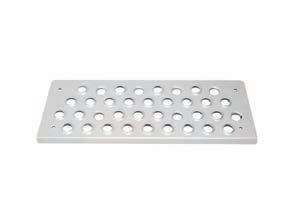
















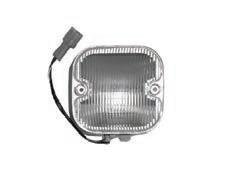





















After committing $467 million more to the Bruce Highway in May, the Queensland government is promising further spending in the years to come


Queensland transport and main roads minister Bart Mellish says.
“Projects that support the Bruce and that help to ease congestion on our main highway are also an important
part of our Bruce plan, like the $1 billion Inland Freight Route (or ‘Second Bruce’) and our investment in the Queensland Beef Corridors.
“Safety is always our most important priority and I’m pleased to be working with key transport advocates to improve safety on the Bruce.”
The Queensland government has also unveiled a 15-year Vision and Action Plan for the Bruce Highway following the federal government’s 2023 Infrastructure Review.
The Bruce Highway Advisory Council oversaw the development of the plan, which will help inform future investment decisions of state and federal governments.
“The release of the 15-year Vision and Action Plans for the Bruce Highway and the Safer Bruce 2030 Action Plan marks a key milestone for the Bruce Highway,” Mellish says.
“We now have a plan for the future of the Bruce Highway which extends beyond the Bruce Highway Upgrade Program commitments.”












































When it comes to truck show adventures our intrepid contributor Warren Aitken is always up for something new
“N

ext time you come over to the States you should come to California for the Truckin for Kids Truck Drags and Show and Shine”. That was the invite extended to me last year by Daniel Linss and Tim Seiben, two of the great minds behind legendary trucking magazine,10-4.
Understandably, my reaction at the time was a resounding ‘HELL YEA’. This reaction was fuelled by more than a few bevvies and contained no consideration for the expense or logistics of it. Once I had sobered up the next day, and thought back to Daniel’s enticing solicitation, I decided to investigate the invite a bit more seriously. It wasn’t purely because I love to experience new truck shows and new locations, there was also the idea of drag trucks in California. It’s California! The most politically correct and
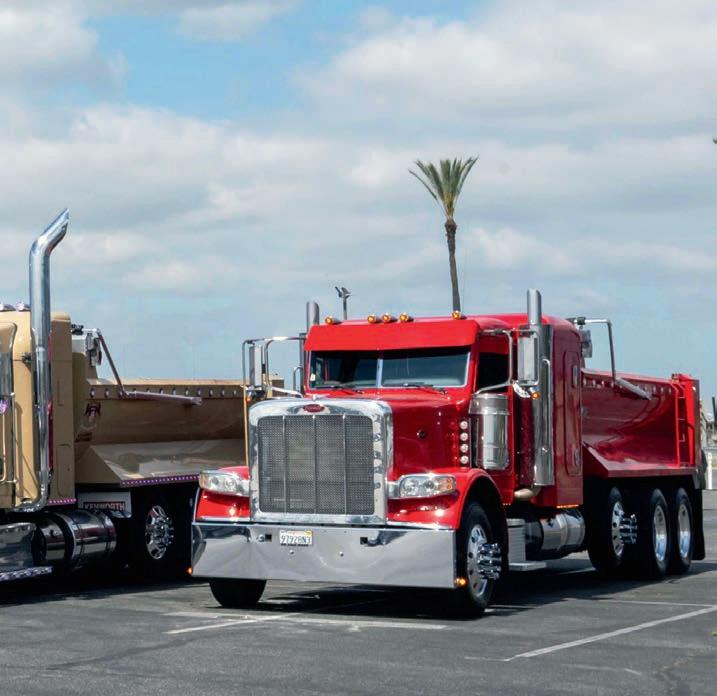














environmentally over-the-top state in America. I was so intrigued as to whether I would see black smoke billowing from sky-high stacks and tyre tread evaporating in a wall of white smoke, or whether I’d be photographing the silence of silky-smooth electric trucks sliding down the dragstrip. Answering that little conundrum was what convinced me to squash myself back into a back-row seat of another airline and pop over to the States, for the Truckin’ for Kids Truck Drags and Show & Shine.





For those unfamiliar with Californian rules and regulations you may be wondering what I am on about. We all know America is home to the long and low ‘Large Car’ concept. Trucks with stacks that reach for the stars and chassis’ that stretch long enough to require road train signage. It’s a look led by such signature models like the classy 379 Peterbilt’s or the staunch-as-hell Kenworth W900s. Those old-school cool trucks, rolling loud with streams of black coal trailing in their wake, that’s what we all envision when we think about going truck spotting in the USA.
Truth be told, in 49 of the 50 states there is a high probability you will have your trucking fantasies realised. The one state that you won’t see any semblance of a Convoy-era rolling coal display is California, because of the ACT Rule. The Advanced Clean Truck Rule. The long and the short of it is that diesel-fuelled vehicles, from 2010 and older, with a gross weight of six and a half tons or more, are not allowed on the Californian highways.
With the inception of all these new rules, and the still-to-come rules — before I’m in a nursing home they will ban all non-zero emission trucks from California — there are a lot of the old school trucks that just go nowhere near the Golden State. So, how good would a Show and Shine, and more importantly a truck drag competition be. The only way to tell was to head over to Irwindale Speedway in California to catch up with Daniel, Tim and the rest of the 10-4 crew and see.
Before I get to share the experience with you, I should give a little background into this iconic event.






The Truckin for Kids Truck Drag and Show and Shine event has been running for over four decades now, raising money for Kids’ charities throughout California.
One of the companies that have been a part of the show for almost its entirety has been the crew from 10-4 Magazine. Then, in 2022, 10-4 Magazine stepped up and bought the show off the original promoters who were looking to retire.
“When the previous owners wanted to retire, we didn’t want the show to go away, it has been such an important event,” 10-4 Editor and owner Daniel Linss says.
“So, we acquired it. We bought all the assets and most importantly the copyright to the name and logo. We decided we would raise money for the Shriners Hospitals for Children, because they were local and many people we knew have had kids that have used their services.
“We had our first show in 2022 and raised $40,000. Though it was only a one day show as the track only allowed us one day.”
After that first 10-4-run show, the owners of Irwindale


















































Saturday I watched in awe as what was once a massive parking lot, shrunk in size at a great rate.

Speedway could see the team were extremely keen to raise the profile of the show and really get it off the ground including the idea of turning it into a two-day event. So it was the Speedway agreed two days for the 2023 event, just six months after 10-4’s first venture.
“The show used to be the last one on the truck show calendar but then so many other shows started popping up, it kind of got lost amongst it all,” Daniel says.
“So, we decided to move it to the start of the season. It was a short turn around but we stepped it up, added a really big kids’ zone, got more drag truck entries and the second show raised around $95,000”. That’s US Dollars by the way.
Now it is 2024, it’s the 43rd running of the Truckin for Kids Truck Drags and Show & Shine, the third running under 10-4 magazine, and my first invitation to come and check it out.
The first thing to note was I did have to wait until day two before I got to see that there was still some smoke to be found in California, but it was easy to fill in the time.
From the moment the gates opened at ungodly o’clock on






The Americans are very big on getting combinations into their shows, and not just the truck and dogs or the iconic 18-wheelers. They bring everything along and it seemed every heavy haulage setup in California was rolling in. The entire far end of the ginormous parking lot was chock full of the behemoths.
Saturday morning was all about the staging. Vendors were whipping up tents and setting up displays whilst the trucks kept rolling in. From your every day, local, trucks, to some exceptional tip trucks and some amazingly cool linehaul units. Tow trucks, fire trucks, tankers and tippers — everyone was represented.
Daniel had stressed earlier in our chat that it’s a show for everyone. “This has always been a working man’s show, and we love that fact that anyone can enter with their working truck.”
By lunchtime on Saturday the registration gates closed, and the public access gates were thrown open. Fans flocked in to see every imaginable setup on display. The kids were flat out in the kids’ zone finishing their colouring-in competition, getting faces painted or taking the chance to get involved in one of the many interactive games on offer.
Night time saw the action ramp up even more as the sun went down and the lights came on. Sound systems were blaring every possible genre of music. By the time you wandered half way through the car park you had experienced country concerts, rap battles and some pretty loud latino tunes. Add in the ludicrious amount of lights some of these trucks were sporting and it was a sensory overload. I got a couple of hours of awe in then headed back to the motel to get ready for the big Sunday ahead.
Day 2 of the Truckin for Kids and it’s the day where the crowd numbers swell and, as it turns out, the clean air act of California becomes merely an afterthought.






Sunday is the day the track action lights up — beginning with the truck drags. There are three different categories available for the truck drags — Stock, Super Street and Super Drag. Or in layman’s terms: ‘Dropped my trailers and gunna have a go’, ‘Sure this truck is a working truck but she’s had a little touch up’ and ‘this looks like a truck, but it only works a quarter mile at a time’.























The progression through the categories was visually obvious as the times went down and the smoke went up.
Along with the trucks on the drag strip there was a pickup truck category, some wheel standers and some good old classic drag cars. There was also a very intimidating 11,000hp Funny car on display and a fully-fledged jet car. Have you ever stood near a jet car when it warms up and runs a drag strip. Well, I can honestly say it was the one time I regretted the extra access a media badge can get you. I felt my eyebrows melting away even after stepping way, way, back.
With almost four hours’ worth of track time on day two I got my answer as to whether I’d be seeing any rolling coal or tyre smoke in California, and it was a resounding yes.
The Super Drag trucks are regulars on the Irwindale Speedway Dragstrip and they put on a hell of a show. I can’t quote you the times though, as the timing board was often shrouded in a sea of smoke wafting down the drag after the Super Drag trucks crossed the line.
Whilst the Stock trucks weren’t setting any records you could see how hard the drivers were going, there was obviously more than just bragging rights on the table as mate vs mate got very competitive.
My favourites were by far the Super Street trucks. A couple of these trucks that I had admiringly watched rolling through the registration gates, trailers in tow on the Saturday, were transformed on Sunday, hammering down the track with black smoke trailing along behind them — it was pretty damn cool. By Sunday afternoon I was smelling of diesel and burnt rubber and I was full of tacos and fabulous funnel cake. The weekend culminated in a live auction before the prize giving, with Storage Wars star Dan Dodson running the live auction.
I have to admit, his skills with the microphone saw me walk away with another model truck I probably didn’t need. But hey, it’s for the kids.
Whilst a good journalist would have a great rundown on the final formalities and show results, that’s not me. I got a little too distracted watching the almost cirque de soil precision with which the speedway parking lot emptied out.

Once again, watching the massive oversize units embark on the ‘Dance of the Departing Truckie’ was amazing. It also gave me another chance to appreciate some of the quality gear that had been packed into the raceway.
Conclusion. It’s a pretty good show, run by great people, for










Top right to bottom: Cody Henderson wanted that old school look for his 2024 389 Peterbilt and he nailed it. Even down to adding an old 379 aerofoil to the roof. This stock truck was all class
Middle, L to R: The registration tent was the place to be. There was a constant stream of impressive trucks coming through; You can’t call into California without stopping in to the sacred Stay Loaded Apparel headquarters. Big thanks to Steve, Brandon and Fernando for showing me around and piling me up with super cool T-shirts




Above right: Ron Kelsey with his 1981 359 Peterbilt. A regular sight in California. How? Well, the truck may have seen 4.1 million miles, but not the 2010 motor he’s put in it. Making it legal in the Golden State
Opposite middle: Death to my diet, courtesy of the discovery of an American classic. The Funnel Cake. What an experience; Managed to gather a fair few of the amazing volunteers early Sunday morning before the festivities began




a fantastic cause. 10-4 magazine are doing a great job of trying to breathe life back into this show. The Truck Drags are a great feature and a lot of fun to watch.

The event doesn’t have the standard of show trucks that you would see at some of the other shows, like MATS or Iowa80, however it is aimed more at the working truck market.
Since 10-4 took over the number of entrants has been growing and it’s a fair bet they’ll crack the 300-mark next year.
It is a great family-friendly weekend with lots to amuse the little ones as well as us big kids. A good selling point is it is right there in LA, so for us Aussie travellers it is an easy show to get to, fly into LA and an hour later you are at the hotel. Yes, there is a lot of the aerodynamic lookalike trucks, but there is also a hell of a lot of coolness and ‘Large Car’ atmosphere at the show. Most importantly though, once the track opens up, you definitely get to see the black coal rolling.




















When Jackson Miloschew first saw The Postman drive past the pub, he knew he had to get behind the wheel as Tiarna Condren found out


















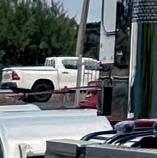

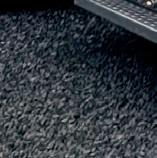

































Waiting for a parcel in the mail can be one of the most exciting yet nerve-racking times. Is it going to get in here in time? Will it fit? Will the person it’s intended for like it?

But have you ever thought about who is in charge of ensuring it gets delivered?












Jackson Miloschew is one of the men in that particular position, carting mail from Australia Post Warrnambool up to Avalon and back.
Pulling nightshifts, Miloschew leaves home at 3pm and returns at 4am five days a week –hours he admits are not ideal.




His truck.



But do you know what makes it worth it?
A 2021 Kenworth T909 aptly named ‘The Postman’, Miloschew says he knew he had to drive it the moment he saw it.


















“I was sitting up at the pub on a Friday night at about 11 o’clock, and as soon as I saw



















































it, I knew,” he says. “I was like oh my god, I have to get behind the wheel of this truck. And I made it happen.”
Following in the footsteps of his father and grandfather, Miloschew entered the transport industry as soon as he turned 18, obtaining his HR license.
“I’ve just always looked up to my dad and granddad, and I’ve always had a passion for trucks.
“That’s what made sense to me.”
Miloschew went on to cart grain and potatoes around the country before deciding the long-haul lifestyle just wasn’t for him.
“It’s just too much time not being at home. I don’t understand how people do it.”
Needing something simpler, he then took to Facebook and began scouring for jobs.
“This job just popped up one day and I had to have it,” he says.
The company he works for is based in Hamilton, Victoria, contracting out to AusPost.
His boss had purchased two identical Kenworths, with one doing the Hamilton run, and Miloschew doing the Warrnambool run in the other.
Starting at Warrnambool at 3pm, he travels to post offices to pick up mail at Terang, Camperdown, Colac, Birregurra and Winchelsea before ending up at the big depot in Avalon.
“I wait a couple of hours there for AusPost to sort through everything, then load back up, travel back to the post offices and end back home in Warrnambool around 4:30am,” he says.
“This has been my first night-shift job and I’ll tell you what, the first few weeks take it out of you. It’s definitely been a huge adjustment.”
Being able to drive the flashy Kenworth is one of the reasons Miloschew says the job is worth it.
Purchased brand new in 2021, the T909 had a fair number of extras put on it.
“My boss had it blinged out with roof lights. There’s like over $500 worth of lights just on the roof.
“It’s decked out with mirror lights, air cleaner lights. The trailers are even all decked out as well.”
His boss even splurged for some super chrome wheels, red lights on the back of the cab and more.
“He’s spent an easy $50,000 decking it all out.”
Considering the effort placed onto making the Kenworth as special as it is, Jackson takes an immense amount of pride in keeping it up to standard.
“Honestly, it gets a wash almost every night,” he laughs. “And a lot of polishing.”
The hard work has obviously paid off, with locals around the Warrambool area dishing out the nickname ‘The Postman’.

“People get pretty excited to see it driving around. I mean, I used to get excited when I spotted it.”
When timing permits, Jackson loves showing off his pride and joy at the truck shows, taking it to the Colac Truck & Ute Show in April.
“It’s the only one I’ve had the time to take it to yet, but I’m hoping to make it to Koroit next year.
“It’s just been awesome driving this truck, a dream come true.”

Owner driver Phillip Meharg leapt into the world of Euro trucking in 2020 and he hasn’t looked back
After 34-years as an owner-driver devoted to American trucks, Newcastle’s Phillip Meharg tried a Scania V8 in 2020. He loved it so much he’s just taken delivery of its replacement, a Scania R 770 V8.
In the heart of COVID, Meharg took delivery of a new Scania R 650 V8 tipper to pull a quad-axle dog for his regular contracts hauling magnetite from Newcastle to mines in New South Wales as well as Queensland.
His other regular work included hauling coal, mulch, sand, gypsum and even compost, though by 2023, the majority of the time spent on the road was hauling magnetite for Kara Magnetite, Kooragang Island.
Four years on from the debut of the R 650 and with 620,000 km on the clock, Meharg took the plunge on another truck, upgrading to a 770 hp Scania V8.
“The 650 has been fantastic,” Phillip says. “Scania has looked after me very well. The truck is unique in that I haven’t seen another 650 tipper with quad-axle dog and people are constantly asking me about it and how it is going.
“When I took delivery of the 650 V8 in mid 2020, I said that I would be happy with fuel burn of around 2 km per litre, which would have been a meaningful improvement over the American truck I was previously using which returned between 1.6- and 1.8-km per litre.
“After 620,000 km I can say that the Scania delivered on this expectation, never under 2-km per litre and often as much as 2.2-km per litre, depending on where we were carting. All the work we do is pretty hilly, so the truck was working hard. It wasn’t cruising a smooth flat blacktop.”
In addition to the fuel burn improvement, which has had a positive effect on Phillip’s bottom line, he also opted for the Scania Repair and Maintenance contract for five years, which meant he had nothing to worry about if anything on the truck broke, and he had full visibility of his maintenance costs for five years.
“When I bought the 650, I wasn’t sure how the R&M contact would work out, but it has been very successful for me, and I have had no hesitation in going with it again on the new truck. The peace-ofmind is great, and there have been no surprises. It was a big step, but you have got to make the change,” he says.
“The Scania crew have been very efficient at both organising my servicing, and preventative maintenance for my vehicle. They have replaced al the oils and fluids at the correct time, even diff oil and retarder fluid, which is something you might overlook if you were doing your own maintenance,” Phillip says.
“I was amazed at how few issues there were and how little work needed to be done on the truck compared with previous trucks I have owned. Even the brakes are still at 75 per cent and 78 per cent of life, and that’s thanks to the retarder. The Scania retarder has also enhanced tyre life, which is another saving on running costs, plus it increases valuable uptime.
“Unlike my mates with American trucks I haven’t had to pay for replacements to wheel-bearings or diff-rod bushes or even for a new gearbox, which they have incurred over the same period as I have been driving the 650. Everyone has been asking how the Scania has been going, and some have got the
message and have shifted to Scania,” he says.
Meharg has also been impressed with the way the Scania combination handled on the road.
“I have a full air front end and I thought I might lean a bit or wallow in the turns, but the computercontrolled suspension responds so quickly, there’s no sway, which is good for ride quality and also reduces tyre wear. The driving experience has been very relaxing, especially compared with my old trucks.
“In the old days I would hop out of the truck after getting home and walk across the paddock to the house, and my wife would chide me to stand-up straight, I was that dog-tired, but with the Scania I still feel fresh, even at the end of an 800 km day.
“A while back I left Newcastle for Brisbane and then went out to Warwick and didn’t feel a bit fatigued. You have to experience this to believe it,” he says.
“About a year ago I went to the Anglesea proving ground and drove the new Scania truck range, and I really was impressed by the 770 V8.
“With the new truck I ordered a new five-axle dog from Sloanebuilt Trailers who manufactured the tipper body and dog that I used with the 650.
“The new tipper body and dog have been sprayed in matching silver to the truck, and even the guards, etc., are all colour-coded so the visual effect is bold and beautiful. I have transferred the ‘Scania’ rego plate to the new truck and the trailer wears ‘R770V8’ plates.
“The AJ’s bull bar is good looking as well, and it really sets of the truck. I now have all the permits and I can’t wait to get the first load on..
“I expect that the fuel will be largely similar to the 650, allowing for the extra weight running at 63-tonnes gross, compared with 57.5-tonnes with the 650, but the truck will do it easily.


“In the 650, running at 100 km/h you’re turning over at just 1100 pm, but there’s so much torque that you just cruise up hills fully laden, then the retarder does all the work on the way back down, keeping the speed exactly under control.
“Sometimes coming off big hills such as Mount Ousley Road in Wollongong, after I’ve arrived at Port Kembla and touched the trailer hubs, they were all cold, the service brakes hadn’t been used at all, it was just the retarder all the way down the hill at 38 km/h,” Phillip says. “The retarder really is terrific.”
“You can just drive the Scania with a finger on the cruise control button and one on the downhill speed control.”
The new R 770 follows the superseded R 650 in having a luxurious leather lined interior.
This time Phillip has opted for a cab cooler/heater system, as
OPPOSITE TOP: Meharg Bulk Haulage has gone big with its Scania trucks
TOP: The V8 power of the Scania’s comes in handy when hauling magnetite to the mines
ABOVE: Phillip Meharg is a big fan of the look, the feel, and the power offered by Scania’s V8 trucks
Images: Scania Australia
“THE PAINT JOB AND THE OVERALL APPEARANCE OF THE COMBINATION HAS ALREADY STIRRED UP A LOT OF INTEREST AND I CAN’T WAIT TO GET OUT ON THE ROAD.”
he spends quite a few nights in the bunk, and he’s also opted for some clear film on the front to resist stone chips.
His trademark blue and red stripes have been reinterpreted again, and there is reflective safety tape over the trailer and tipper body, to be compliant with mine access requirements.
“Sloanebuilt have definitely exceeded my expectations in customising my new bin and trailer. They’ve done an excellent job finishing them inside with a special paint to allow the magnetite to slide out more quickly,” Meharg says.
“With the five-axle dog, the third axle lifts, which should save some wear and tear when running empty. AirTarps have done a great job fitting fully sealed, waterproof tarps to pelmets on both bins.
“The paint job and the overall appearance of the combination has already stirred up a lot of interest and I can’t wait to get out on the road.”
Scania new truck account manager for central New South Wales, Butch Quin, says he is also excited to see the new 770 V8 hitting the road.
“The previous 650 V8 was a distinctive truck, and the new one is just as bold,” Quin says.
“I am confident Phillip will enjoy his time behind the wheel of 770 hp, who wouldn’t? Based on the experience he had with the 650 V8 coping extremely well with his heavy hauling, and returning impressive fuel economy, smooth handling and of course all the active and passive safety features that make the Scania the safest truck on the road, we look forward to Phillip enjoying the next five years just as much, behind the wheel of the Scania King of the Road.”
With 780hp at hand the top end of the new Mack Truck Euro 6 range is sure to grab plenty of attention
Mack Trucks Australia has announced the launch of its most powerful power plant yet, with standard safety included in Mack’s all-new Euro 6 engine range.
A whole new range of Mack drivetrains has been revealed that includes an all-new range topping 780hp 17-litre MP11 engines and a stump pulling 3800Nm of torque.
The new Mack Trucks Euro 6 range is now available to order with the first vehicles expected to hit the

road in early 2025. Mack says the Super-Liner has already held the title of Australia’s most powerful conventional truck for more than a decade, with this new model set to elevate its offering.
The arrival of the new MP8HE (high efficiency) engine platform will help evolve Mack’s powertrain, with the 2800Nm of torque increasing the output from Mack’s standard MP8 engine.
Mack’s evolution of Bendix Wingman Fusion and a new infotainment system, alongside a standard rear-view camera, will
help improve visibility and safety.
The fully integrated 70-inch walk-through sleeper will also be available for order with Euro 6 Super-Liner and Titan products, with single and double bunks included.
“To say we’re excited to bring this range of engines to market here in Australia would be an understatement,” Mack Trucks Australia vice president Tom Chapman says.
“To be able to now offer both power and efficiency across such a broad array of transport tasks in
this country is truly game changing for Mack.
“Ultimately, the biggest winners here will be our customers. From demanding heavy haulage in our nation’s interior to the vital intercapital freight arteries, Mack Trucks has now more than ever the ability to deliver a better driving experience, more time on the road and lower running costs.”

Specialists in CAT and Cummins Engines also carrying parts for all American Truck Brands and Road Ranger Gearboxes. Rebuilt and Second Hand Options Available. Warranty with all second hand and rebuilt engines.
CAT C-15 Rebuild (6NZ or 9NZ Prefix) $48,000 + GST exchange on Special Until EOFY or While Stocks Last. (Block Work, Pistons/Sleeves, Cyl Head, Injectors, Turbo, Camshaft, Rocker Gear, Water Pump, Oil Pump). 12 Months Parts Warranty, 6 Months Return to Base Labour. 550 HP Spec.
CAT C13 Engine (KCB Prefix) $25,000 + GST exchange. Second hand engine with 600,000km on it. Runs good with good oil pressure. 60 Days Return to Base Warranty. 470 HP Spec.
CAT C15 Acert Engine (NXS Prefix) $26,000 + GST exchange. Second hand engine. Has had a bearing roll (mains and big ends). 60 Days Return to Base Warranty. 550 HP Spec.
Cummins Signature Gen 2 Rebuilt Engine $48,000 + GST exchange on Special until EOFY or Stocks Last. Block Work, Pistons & Sleeves, Cylinder Head, Turbo, Camshafts, Injectors, Water Pump, Oil Pump all done. 12 Months Parts Warranty and 6 Months Labour.
Cummins ISX 475 Engine Second Hand Engine. $22,000 + GST exchange on Special Until EOFY. Good Oil Pressure, Ran Good. 60 Days Return to Base Warranty.
Cummins Signature Gen 2 Second Hand Engine $25,000 + GST exchange. Good Oil Pressure, Ran Good. 60 Days Return to Base Warranty.
Cummins ISX Signature EGR Engine. $52,000 + GST Exchange on special until EOFY or Stocks Last. Blockwork, Pistons & Sleeves, Cylinder Head, Turbo, Camshafts, Water Pump, Oil Pump.


Road Ranger Gearboxes Reconditioned and Second Hand. All genuine Eaton Parts in reconditioned boxes. Various models available including 16718B, 16918B, 18918B, 20918B, 22918B. Call for pricing and availability of your preference.
Engine manufacturer Cummins and truck specialists Isuzu have joined forces to release a new engine to market
Cummins has unveiled its newest product, working with Isuzu to introduce a new 6.7-litre engine, the ‘Isuzu DB6A’.
The engine is specifically designed for Isuzu’s mediumduty truck lineup, and marks a union between the two companies worldwide and in the Japanese market.
While it will start production in Japan, at Isuzu’s engine plant in Tochigi Prefecture, Cummins and Isuzu aim to make the new engine available in the Asia-Pacific market, including Australia, soon.
“Today marks an important milestone for both Cummins and Isuzu as Cummins enters the Japanese on-highway market for the first time in our 105-year history,” Cummins chair and CEO Jennifer Rumsey says.
“I’m proud of the strong partnership our two companies have built and I’m excited to

leverage our collective strength and scale to expand our impact and continue meeting the evolving needs of our customers.”
The creation of the new engine marks the next step in Cummins and Isuzu’s working relationship, which was first established as the Isuzu
Cummins Powertrain Partnership in May 2019.
In 2022, Isuzu North America then integrated the Cummins B6.7 engine into its FTR and FVR trucks for customers in the United States and Canada.
“We need to invest in both internal combustion engines and electrification to achieve carbon neutrality,” Isuzu Motors chairman and representative director Masanori Katayama says.
“I am convinced that Cummins is the best partner in such a challenging time. Isuzu and Cummins leadership has established strong mutual trust and respect for each other since the first day of our partnership.
“I am confident that our strategic partnership will continue and expand over future generations of respective leadership.”


Volvo is opening the order book for its new Euro 6 lineup, which is coming to Australia now.
be available for purchase this week.
The updated FH16 focuses on efficiency and driver appeal, with a 600hp variant and 3000Nm of torque, while the 700hp offers 3400Nm.
The range topping 780hp option delivers a massive 3800Nm making the flagship FH the most powerful Volvo yet.
Australia vice president Tom Chapman says this latest evolution of the Volvo heavy duty range takes their offering to the next level.
“Across the entire range these trucks will deliver superior power, economy and uptime for owners, operators and drivers alike,” he says.
The Euro 6 17.3-litre powerplant shares the same basic architecture as the 16-litre engine it replaced, with the extra capacity resulting from an

increase in cylinder bore.
With an aim of efficiency and a cleaner operation, the engine features a new fuel injection system, low friction cylinder liners as well as wave top pistons to ensure optimised combustion.
“Our Australian made Euro 6 line up has been delivering class leading efficiency, performance and uptime to Australian transport operators since 2020,” he says.
“There’s no doubt that the power and
torque on hand from this drivetrain will win fans on Australian highways.” Aerodynamic and styling updates have been added across the range including revised USB ports, a new touchscreen side display and an improved audio system.
The new powerplant meets Euro 6 emissions standards utilising a combination of Exhaust Gas Recirculation and Selective Catalytic Reduction. Forced induction duties are taken care of by a new Variable Geometry Turbocharger.
“However, the performance of the D17 engine in the new FH16 will guarantee to impress the person behind the wheel,”
The engine makes the most of its remarkable power output at a relatively low rpm, a low flat torque curve stretching from 1000 to 12rpm and all power ratings being HVO (Hydrotreated Vegetable Oil) compatible.
“These drivetrains complement our journey to fossil-free transport solutions, not only in terms of fuel efficiency, but also in terms of their ability to utilise a variety of alternate fuel options,” he says.
The updated Volvo range also introduces the option of an airsuspended front axle, including 8×4 configurations for both prime movers and rigid vehicles.

With the rise of self-driving vehicles, is it only a matter of time before we get a country song where a guy’s truck leaves him too?
The truckie and the emu
A truckie and an emu walk up to the counter of a roadhouse and the waitress asks them for their orders.
The truckie says, “A hamburger, chips and a Coke,” then turns to the emu to ask, “What’s yours?”
“Sounds great, I’ll have the same,” says the emu.
A short time later, the waitress returns with the order. “That will be $10.40 please.”
The truckie reaches into his pocket, pulls out the exact change, and pays.
The next day, the man and the emu come again and he says, “A hamburger, chips and a Coke.” The emu says, “Sounds great, I’ll have the same.”
Again, the truckie reaches into his pocket and pays with the exact change.
This becomes routine until one day when the waitress asks, “The usual?”

“No, it’s Friday night, so I’ll have a steak, baked potato and a salad,” says the man.
“Same for me,” says the emu.
The waitress brings the order and says, “That will be $32.62.”
Once again, the man pulls the exact
change from his pocket and places it on the table.
The waitress cannot hold back her curiosity any longer. “Excuse me mate, but how do you manage to pull the exact change from your pocket every time?”
“Well,” says the truckie, “a few years ago, I was cleaning out the back shed, and I found an old lamp. When I cleaned it, a genie appeared and offered me two wishes. My first wish was that if I ever had to pay for anything, I would just put my hand in my pocket and the right amount of money would always be there.”
“That’s brilliant,” says the waitress. “Most people would ask for a million dollars or something, but you’ll always be as rich as you want, for as long as you live!”
“That’s right. Whether it’s a litre of milk or a Rolls Royce, the exact money is always there,” says the man.
Still curious, the waitress asks, “So what’s with the bloody emu?”
The truckie pauses, sighs and answers, “My second wish was for a tall bird with long legs who agrees with everything I say.”
Fun truck facts
• The longest truck convoy recorded in the world consisted of 587 semi-trucks rolling through the Netherlands in 2018, setting a Guinness World Record
• The largest trucks in the world are to be found here in Australia with road trains longer than 54m traversing parts of the country
• The first commercial truck was built in 1896 by Gottleib Daimler and featured a 4-horsepower engine
















State, territory and local governments are now, and have been for a number of months, able to apply for funding for new and upgraded heavy vehicle rest areas under the Australian Government’s Heavy Vehicle Rest Areas (HVRA) initiative.
The Federal Government has allocated $140m over the next 10 years for the construction or upgrading of heavy vehicle rest areas. To ensure that truck drivers (and taxpayers) get the best result from this process, the Federal Government has created the Heavy Vehicle Steering Committee. Ultimately, this step in the right direction is a sign that the Government is serious about addressing driver fatigue and improving working conditions for long distance and regional truck operators. By now, most Australians, not just truck drivers, would know how dangerous driver fatigue is – it’s not too much of a stretch to say rest areas could literally save lives.
Once again Senator Glenn Sterle, a champion of the transport industry, has led the way in establishing and chairing the Committee to help advise the Government of locations, as well as establishing guidelines and dedicated criteria for the rest areas. The Committee consists of four industry representatives and five drivers, including myself. The chance to contribute to anything that makes our roads safer for truck drivers,
and also members of the public that share the roads with us, is something I don’t take lightly, and, like the rest of the committee, I’m eager to make contributions that help improve safety for all road users.
The way the Committee works is it assesses applications from different applicants on the sites which would be most suitable for the creation of a rest area, or for existing rest area sites that require an upgrade, whether it be to increase capacity or to install some level of facilities or both. This allows project proposals from State, Territory and Local Governments to be assessed against the criteria to ensure the most worthwhile and needed projects are funded.
While we had initially hoped for greater interest from Local and State Governments, the uptake has been a little slow thus far. However, there seems to be a positive shift in recent times, with local governments becoming more aware of the importance for rest areas. Applications for new sites or upgrades are on the rise. Perhaps drivers and operators can take the initiative to engage with local shire councils they travel to or through, encouraging them to submit applications for the inclusion of muchneeded rest areas/upgrades in that area.
In the first round of project applications, we saw the approval for the upgrade of the rest area facility at the eastern approach to Roma on the
Warrego Highway in Queensland, in Bridgewater in Tasmania, Salt Creek in South Australia and the sealing of 35 truck informal rest areas and green reflectors installed on four highways within the Gippsland in Victoria. These projects feature combined funding with Australian Government and Local or State Governments.
In the second round of applications, new projects have been approved for the Newell Highway in NSW, the Sturt Highway in NSW, Barrier Highway in South Australia and in Pingelly in Western Australia. Another set of applications for projects is currently under review.
From my personal experience on the road, there are ample opportunities for the establishment or enhancement of rest areas, such as the location at Goolgowi in New South Wales situated at the intersection of the Kidman Way and the Midwestern Highway or numerous spots between Port Augusta and Ceduna.
The Committee is giving its best to suggest and advise in the design and development of rest areas. These projects could include dedicated slip and turning lanes, upgraded signage, shelters, all weather pavements, perimeter lighting and, in some cases, amenities. There are a few things that could be out of our control – for instance, the issue of installing showers at some locations is not always feasible and the lack of clean water and the logistics of servicing in some remote regions also comes into play. Some areas could possibly be separated for shared use with other travellers using our roads that also need to be well rested and alert in their travels. There are numerous ideas and proposals being considered.
Rest areas are an essential component of the transport industry. They play a crucial role in ensuring all drivers can be well rested if they require, which is necessary for the safe functioning of the industry. I am grateful for the dedication of our senator and all the members of the committee and am certain our combined efforts will have a lasting positive effect for generations of truck drivers and other road users in the future.











































































The most-tested Western Star ever, the all-new X-Series is seriously tough. Boasting our legendary Star durability, the X-Series features a powerful integrated driveline, advanced safety systems, and superior comfort - even in the most rugged of applications. But talk is cheap. Experience it for yourself.


